The 25 Cheapest Places to Live: U.S. Cities Edition
Have a look at the cheapest places to live in America for city dwellers. Is one of the cheapest places to live in the U.S. right for you?
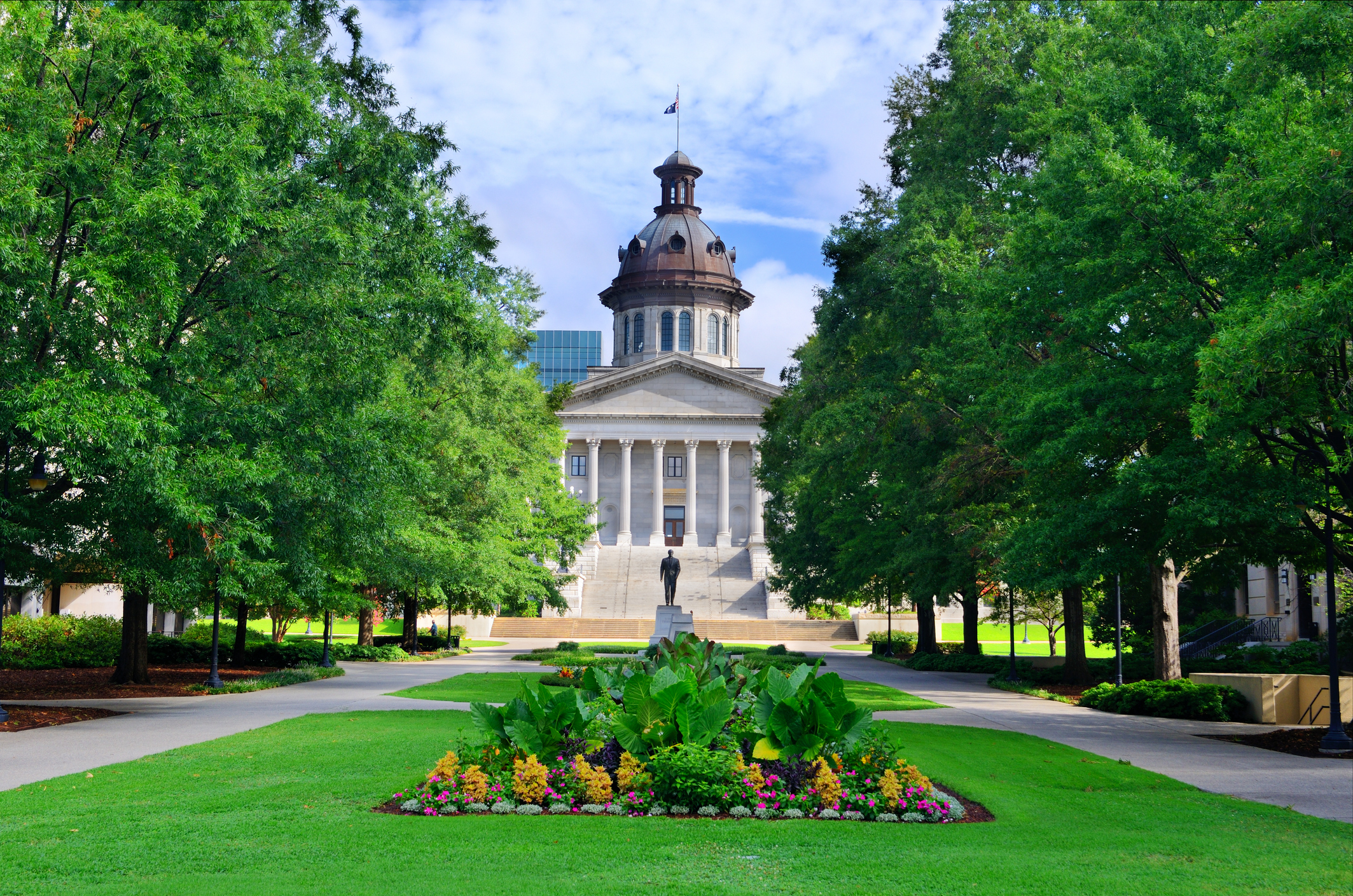

When it comes to finding the cheapest places to live in the U.S. for city dwellers, the best locations to settle down are mostly south of the Mason-Dixon line. Tennessee and Alabama are just a couple of the Southern states making multiple appearances on our list of the cheapest places to live among U.S. cities.
But if you're thinking about relocating to one of these places with the lowest costs of living, just remember to weigh the pros and cons. Cheap prices are attractive, but the allure can fade if jobs are hard to come by, paychecks are small or the area offers little to do. Plan an extended visit to ensure that one of these cheapest places to live fits your needs.
"It is undeniable that larger metro areas like New York and Los Angeles offer better opportunities for higher paying jobs," notes Tyler Baines, cost of living project manager and research analyst at the Center for Regional Economic Competitiveness. "But jobseekers should not only consider the size of their paycheck when figuring out where they should call home."
To that last point, Kiplinger has extensive experience in covering real estate, demographics and cost of living data for jobseekers, would-be homeowners, remote workers and retirees.
How we found the cheapest places to live
Our analysis of the cheapest places to live in the U.S. is based upon the Council for Community and Economic Research's (C2ER) calculations of living expenses in 265 urban areas. We then limited ourselves to metro areas with at least 50,000 inhabitants. We further supplemented C2ER's research with data from the U.S. Census Bureau and the U.S. Bureau of Labor Statistics.
(For smaller urban areas, be sure to read our list of the 10 Cheapest Small Towns in America.)
C2ER's Cost of Living Index measures prices for housing, groceries, utilities, transportation, healthcare, and miscellaneous goods and services, such as going to a movie or getting your hair done at a salon.
Thanks to that data — which sorts through 90,000 prices covering 60 different items in hundreds of cities — we were able to pinpoint the places with the absolute lowest costs of living.
And make no mistake, the difference between the priciest place to live and cheapest places to live in the U.S. is striking.
"The after-tax cost for a professional/managerial standard of living ranges from more than twice the national average in Manhattan, New York, to more than 20% below the national average in Decatur, Illinois," notes C2ER.
Read on for our latest list of the 25 cheapest places to live, in the U.S., for city dwellers.
Disclaimer
Source: C2ER's Cost of Living Index, 2024 Annual Average Data, published October 2024. Index data is based on average prices of goods and services collected during the third quarter of 2024, with index values based on the new weights for 2024. Metro-level data on populations, household incomes, home values, poverty rates and other demographic information are from the U.S. Census Bureau. Metropolitan area unemployment rates, courtesy of the U.S. Bureau of Labor Statistics, are not seasonally adjusted, and are as of January 16, 2025 for the month of November 2024, which is the latest available data.
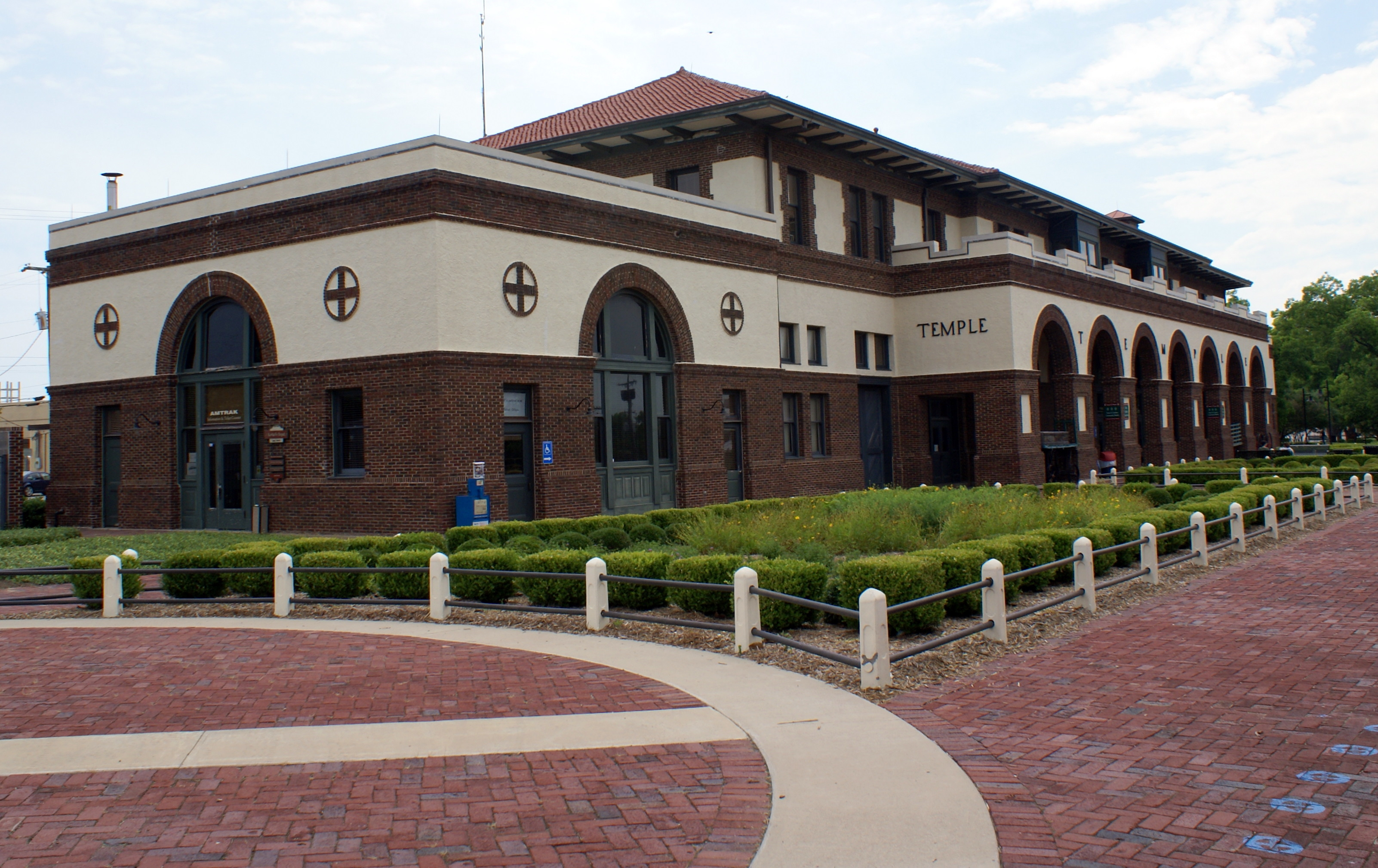
25. Temple, Texas
- Cost of living: 11.7% below U.S. average
- Metro population: 93,101
- Median household income: $74,923 (U.S.: $80,610)
- Median home value: $255,700 (U.S.: $520,771)
- Unemployment rate: 4.9% (U.S.: 4.1%)
Temple lies in Central Texas and is a principal city in the Killeen–Temple–Fort Hood metropolitan area. It is located within a relatively short drive of most of the major cities of Texas. (The operative word is relative as Texas is 268,596 square miles in total area). Forth Worth and Dallas are 124 and 130 miles north respectively. Austin is a short 65 miles southwest, while San Antonio is 147 miles away in the same direction.
Transportation costs loom large in a state as massive as Texas; Fortunately residents of Temple get a break. A person living in Temple can expect to spend over 10% less on transportation costs than the national average. A local can fill their gas tanks for 12.6% less than folks around the country. Despite the abundant oil and natural gas reserves, utility costs are almost 10% above what most Americans pay and only 3% below what residents of the most expensive city, Manhattan, pay for their utilities.
There is no romantic or heroic founding story; Temple was created as a railroad town by the Gulf, Colorado and Santa Fe Railroad in 1880. A second railroad came to town two years later and Temple remained a town of shacks, tents and saloons until its incorporation in 1882.
Temple was founded as a railroad junction and still serves as a major freight railroad hub. Both the Union Pacific Railroad and BNSF Railway have mainlines serving the city. The junction serves as a complement to the collection of distribution centers. It is home to the headquarters of Wilsonart International, and the McLane Company.
It will come as no surprise that the Temple Railroad and Heritage Museum is housed in a restored 1907 Santa Fe Depot. The museum is dedicated to preserving the history of the City of Temple and showcasing how the railroad made it possible.
The city is known as a regional medical center, with four major hospitals including Baylor Scott & White Medical Center, which is the largest employer with over 11,000 employees. While residents have access to quality healthcare, it comes at a cost that is 5.5% over the national average.
The tax picture in Texas is a mixed bag. There is no state income tax, which means other taxes, such as sales tax, serve as the primary way the state government is funded. The statewide sales tax rate of 6.25% is on the high side, and localities can add up to 2% on top. Property taxes in Texas were recently reduced for many by an increase in the homestead exemption. Retirees may find the lack of inheritance or estate tax a reason to get a homestead of their own in Texas.
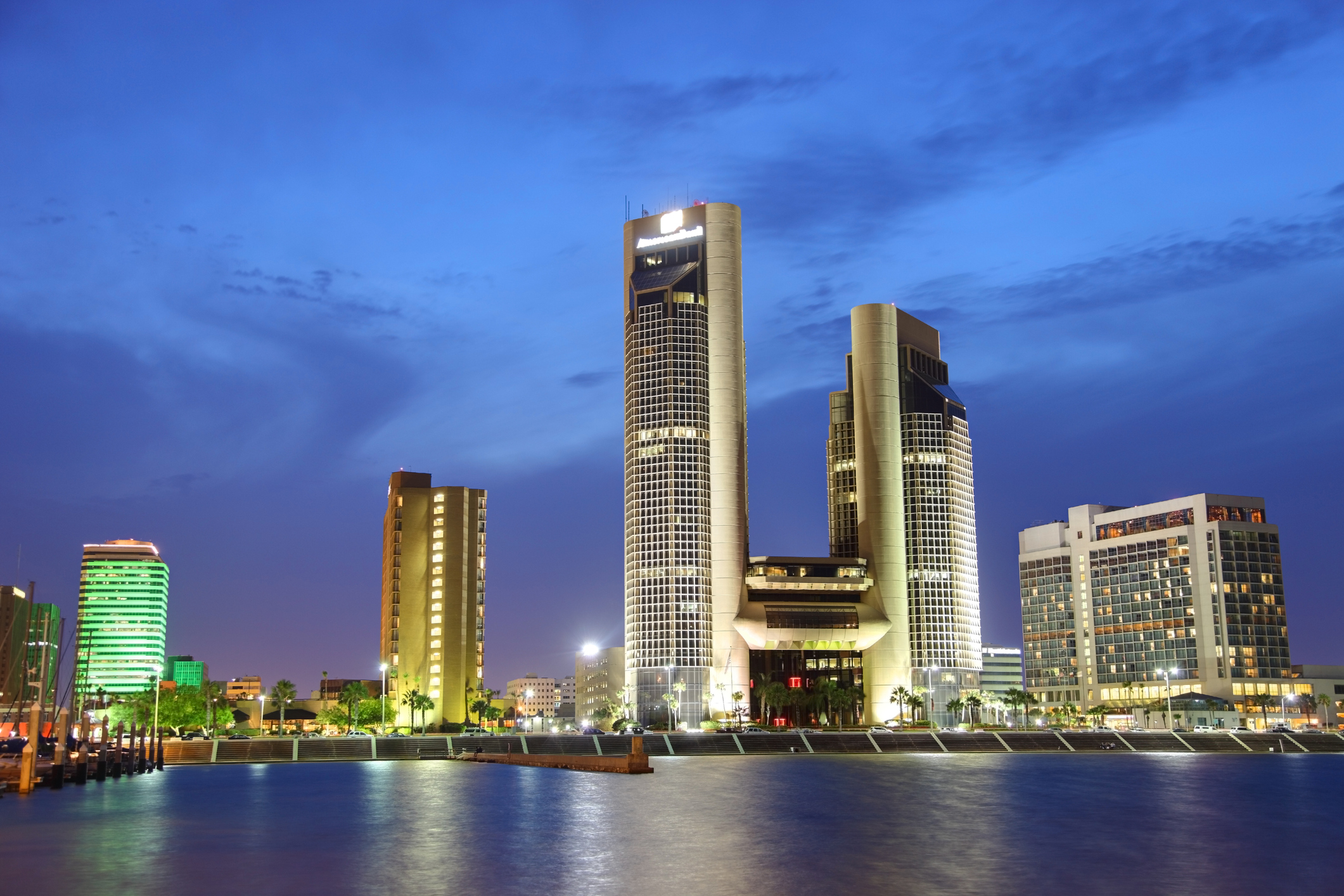
24. Corpus Christi, Texas
- Cost of living: 11.8% below U.S. average
- Metro population: 317,383
- Median household income: $66,325
- Median home value: $197,100
- Unemployment rate: 4.5%
Wondering why a Texan city has a Latin name? The story goes that in 1519, Spanish explorer Alonso Álvarez de Pineda discovered a semi-tropical bay in the Gulf of Mexico on the Christian feast day of Corpus Christi — and promptly named his discovery in its honor.
Five hundred years later, and the city is the eighth most-populated in Texas, with a bustling international airport and the third largest port in the U.S., predominantly exporting oil and gas. Does that mean the folks of Corpus Christi get a break at the pump? They get a discount of 11.6% off the national average of $3.406 and pay $3.012 per gallon.
As you’d expect in Texas, the oil industry is still important for the local economy — refineries Citgo and Valero are two big names in the area. But other major employers include Corpus Christi Naval Air Station and Texas A&M University, along with businesses in the hospitality and tourism sector. With more than 250 days of sunshine a year, and miles of sandy beaches to explore, Corpus Christi is a key stop on the Texan tourist trail, attracting both domestic and international visitors. Major attractions include the Texas State Aquarium and the USS Lexington.
Happily, the beautiful climate and natural amenities also make Corpus Christi an idyllic place to live — especially if you’re the outdoors type. Nature lovers can head to Mustang Island State Park for kayaking, birdwatching, camping and fishing, for instance, while water babies can surf, sail and swim at any of the nine local gulf and bay beaches — or even just bob peacefully in the Laguna Madre, one of the world’s only hypersaline lagoons, where the high salt concentration makes floating easy.
Access to the great outdoors is more affordable with housing costs 20% below the national average. Homes cost, on average, $391,120 and that is $129,651 less than $520,771, the average cost around America.
All that coastline means an abundance of seafood to eat in the city’s plentiful restaurants — although Tex-Mex is equally popular. And with year-round events taking place on or near the waterfront, including Barefoot Mardi Gras, the Jazz Festival, Pride and Juneteenth celebrations, you’d be hard pushed to find a more vibrant Texan city.

23. Jackson-Madison County, Tennessee
- Cost of living: 12.27% below U.S. average
- Metro population: 181,826
- Median household income: $59,532
- Median home value: $199,800
- Unemployment rate: 3.6%
Jackson, Tennessee, and surrounding Madison County are located 90 miles northeast of Memphis, serving as a regional center of trade for West Tennessee. Some of the area's largest employers include Kellogg (K), Stanley Black & Decker (SWK) and Masco's (MAS) Delta Faucet Company.
The city doesn't lack for leisure activities either. The Ned R. McWherter West Tennessee Cultural Arts Center, the West Tennessee Healthcare Sportsplex and the International Rock-A-Billy Hall of Fame Museum are just three of the city's main attractions.
And it all comes in an affordable package. The overall cost of living is 14.0% lower than the national average, led by particularly low healthcare, transportation and housing expenses.
Indeed, housing costs, including mortgages, rents and insurance, are nearly 30% lower than the U.S. average. Folks looking to buy will be happy to hear the average house price stands at $370,320, a savings of $150,451 when compared to the national average. Average apartment rent is $1,130 vs. $1,578 for the U.S. as a whole.
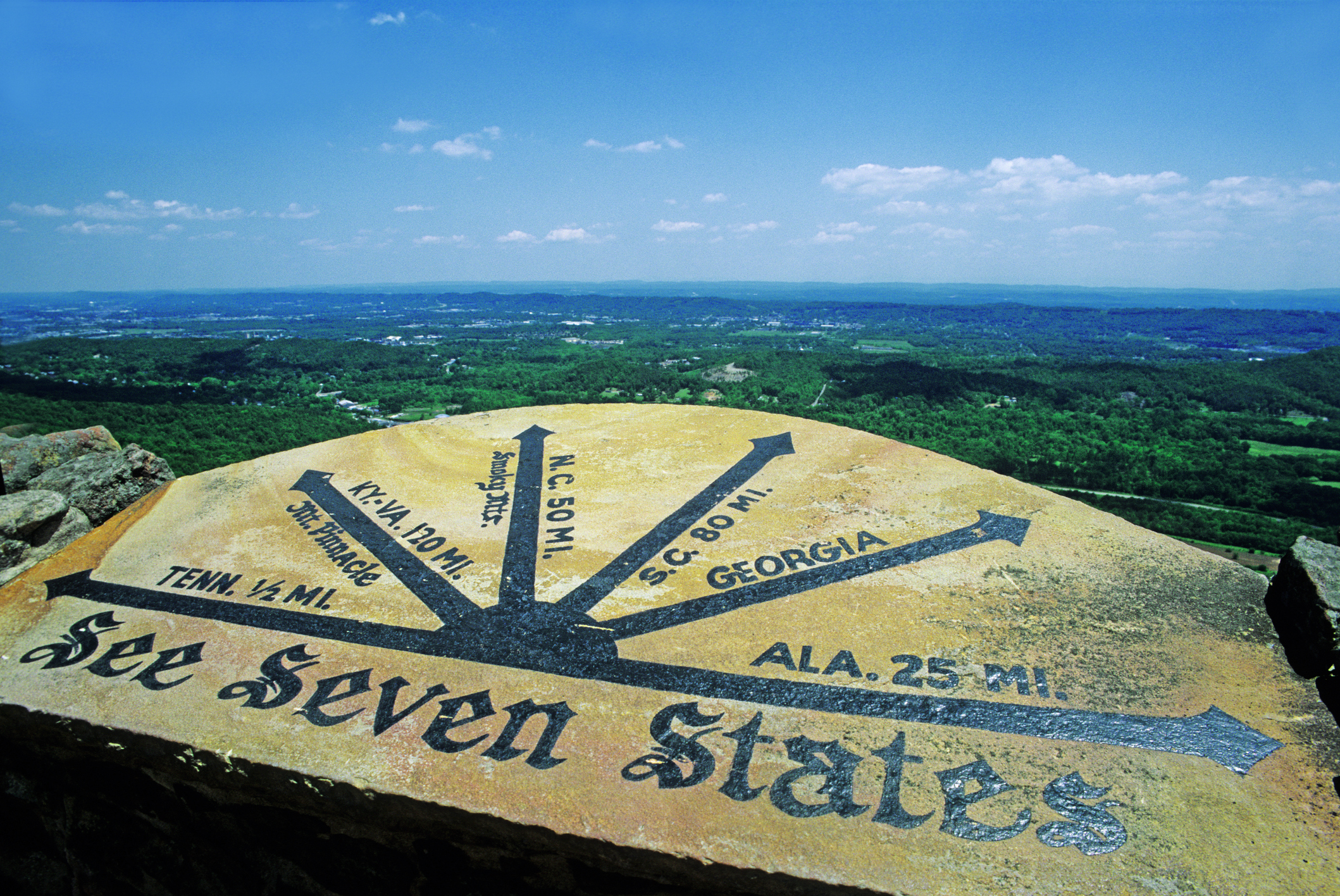
22. Chattanooga, Tennessee
- Cost of living: 12.2% below U.S. average
- Metro population: 187,023
- Median household income: $62,547
- Median home value: $311,300
- Unemployment rate: 3.4%
Nestled among lush, green mountains and straddling two banks of the Tennessee River, it’s not hard to see how Chattanooga earned its official nickname, ‘the Scenic City.’ In fact, ‘Nooga,’ as it’s fondly known by locals, has worked hard to throw off the tarnished image it had acquired by the 70s and 80s as a polluted industrial, manufacturing and railroad hub, and reinvent itself as a city of culture and innovation.
The population of Tennessee is growing and is largely driven by migration from other states. The state's population is on track to reach 8 million by 2040. Chattanooga has seen it's ranks swell by 1.5% in 2022 and 2023. New residents might be attracted to the affordable cost of living, housing and jobs. Overall costs are 12.2% below average and housing is almost 20% less than the rest of the country. The cost of utilities (-14.6%) is another expense that takes a smaller bite out of household budgets.
While the city is still home to manufacturers, including healthcare giant Sanofi and relative newcomer Volkswagen, thousands of Chattanooga employees work in the professional services and technology sectors, and the city’s Chamber of Commerce reports that young tech and logistics companies are experiencing high levels of growth. Transportation costs in Chattanooga are 12.9% less than average, making the commute to work 5.9% more affordable than those in neighboring Jackson-Madison County.
Thanks to millions of dollars of investment, residents now enjoy a redeveloped waterfront and a riverwalk connecting parks and the historic arts district, not to mention a vibrant downtown area, offering restaurants, cafés and entertainment spaces. The city holds frequent arts, music, and food and drink festivals, such as the annual Wine over Water event, which raises money to preserve the city’s heritage sites and is usually held on the historic Walnut Street Bridge. To get around without a car, you can use the Bike Chattanooga share scheme, or the downtown shuttle fleet of zero-emission electric buses.
If you’re more into sports and adventure, the local landscape makes Chattanooga a convenient base for pretty much any outdoors activity you can think of, from cycling, hiking, fishing and kayaking, to caving, white-water rafting, hand-gliding and, of course, rock climbing. In fact, the name “Chattanooga” comes from a native American word for “rock coming to a point.” This refers to Lookout Mountain, a local landmark from where you can see seven U.S. states: Tennessee, Kentucky, Virginia, South Carolina, North Carolina, Georgia and Alabama — or so it’s claimed.
A common theme on this list is the absence of income taxes. Although they don't tax income, they do have a 4% state tax on groceries and collect almost 25 cents per gallon of gas. A lack of estate and inheritance taxes might offset the grocery, gas and sales taxes.
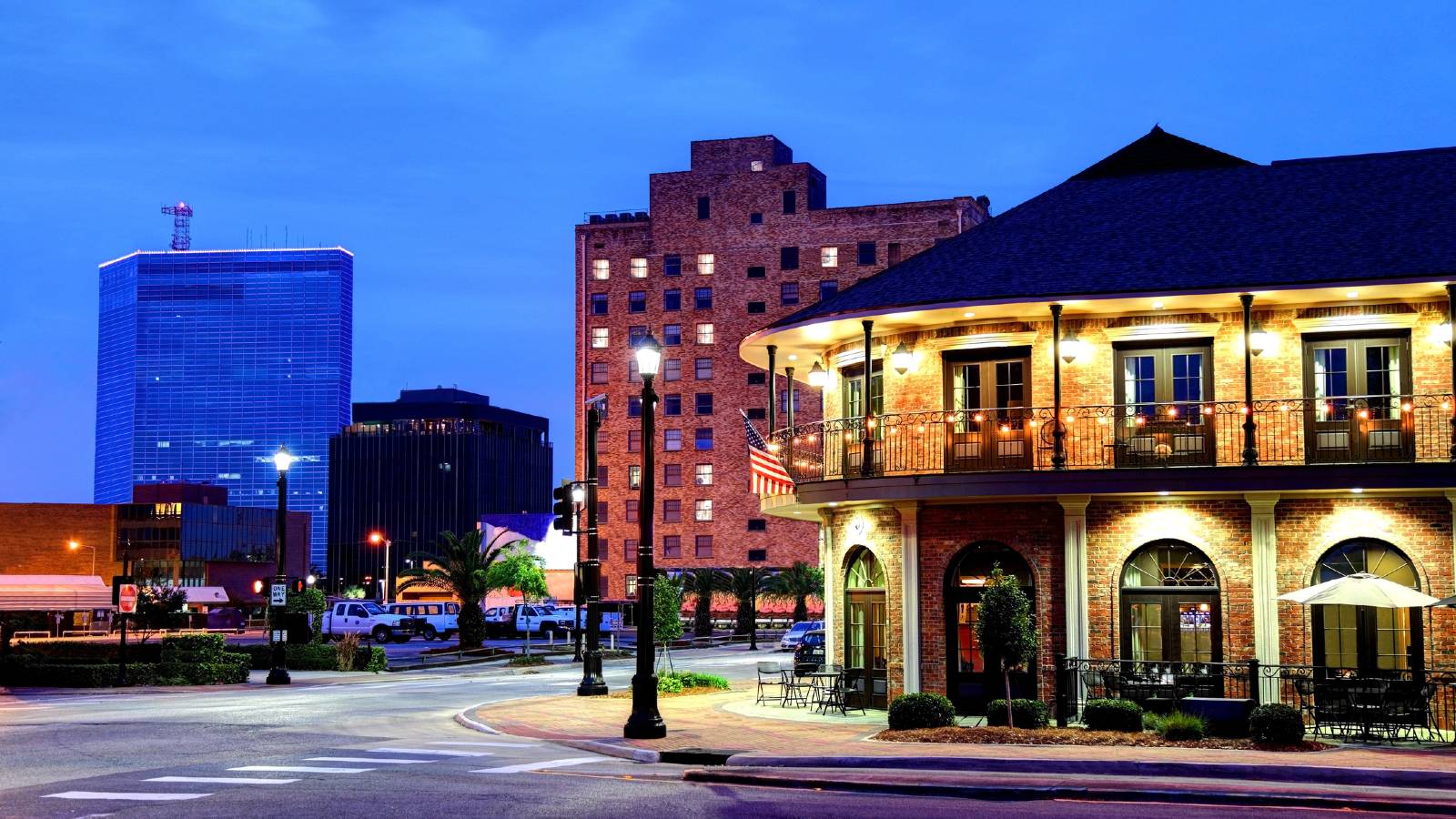
21. Lake Charles, Louisiana
- Cost of living: 12.3% below U.S. average
- Metro population: 79,647
- Median household income: $55,420
- Median home value: $217,300
- Unemployment rate: 4.1 %
Tucked away in steamy Southwest Louisiana, Lake Charles is steeped in Creole and Cajun culture. An economy bolstered by petrochemical refining, casinos, tourism and higher education helps give the metro area an unemployment rate a tick lower than the national average.
At the same time, the cost of living runs 12.3% lower than the national average. As is typical with every city on this list, affordable housing leads the way. Overall housing costs run 34.3% less than what the average American pays. That includes everything from mortgages and rents to insurance and other allied costs.
Utilities, which cost about a third less than the U.S. average, are another notable way that locals save on their bills. Groceries, healthcare and miscellaneous goods and services all run 3% to 6% lower than the national average. Utilities are a whopping 32% below average and this helps to offset transportation costs that are almost 4% higher than average.
Tourists flock to metro Lake Charles – also known as the Lake Area – thanks to its abundance of lakes and waterways, as well as its casinos. But the metro area has significant academic life, too, thanks to the presence of McNeese State University and Sowela Technical Community College.
Just be forewarned that the metro area's poverty rate of 21.5% — while 14% higher than the state level of 18.9% — is much higher than the national rate of 11.1%. That sad reality also helps keep costs in check
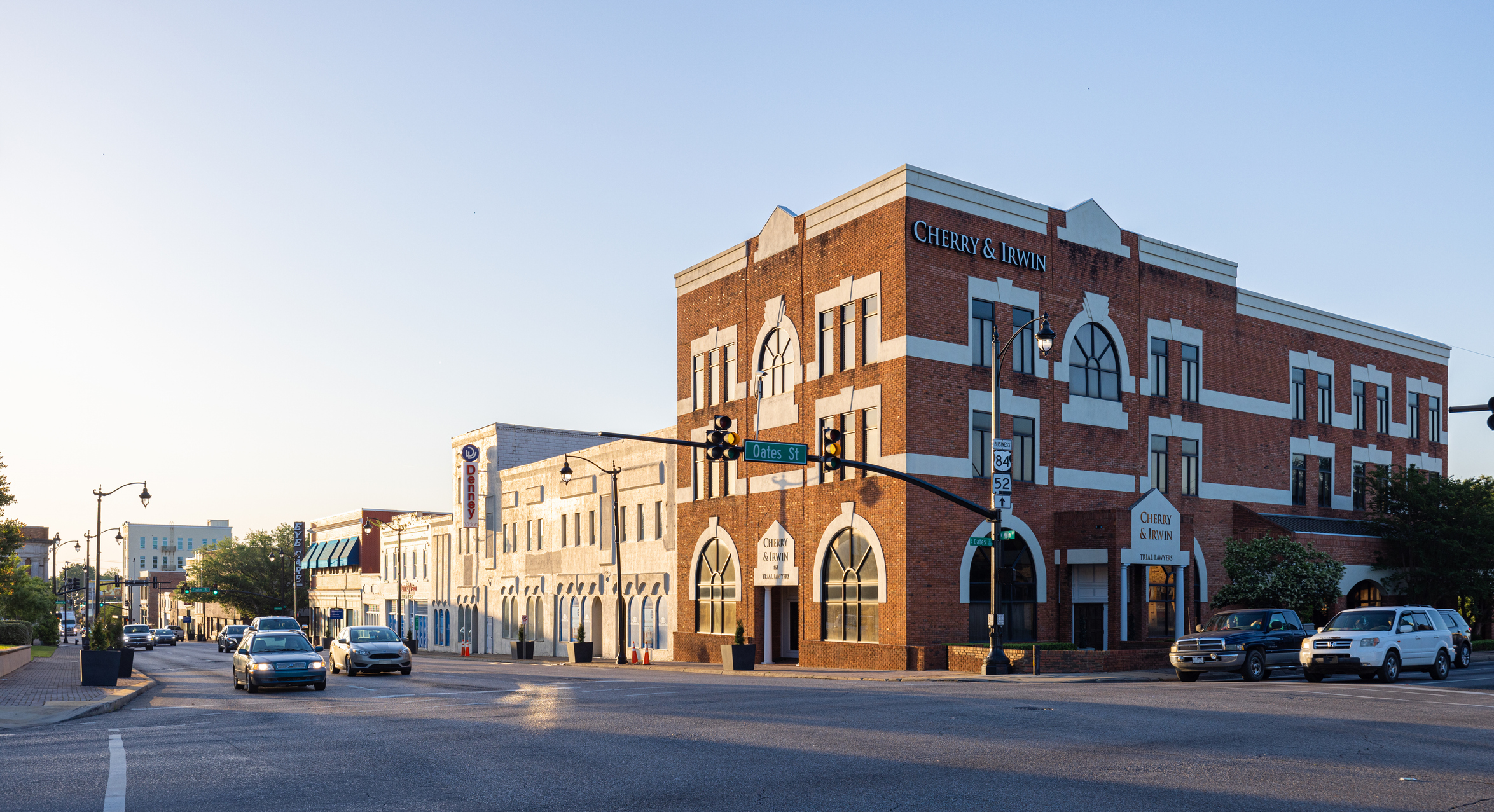
20. Dothan, Alabama
- Cost of living: 12.3% below U.S. average
- Metro population: 77,118
- Median household income: $55,052
- Median home value: $186,600
- Unemployment rate: 3.4%
Dothan was originally part of the colony of British West Florida. Its history as a modern city starts in 1893 when it secured a stop on the first railroad to be built in the region. Local pine forests were harvested for turpentine and wood, and the cleared land was used to cultivate cotton that was devastated by the boll weevil in the early 1900s. This is when farmers turned to peanuts.
Approximately one-fourth of the U.S. peanut crop is produced nearby and much of it is processed in the city, earning it its nickname the “Peanut Capital of Alabama.” Dothan also hosts the National Peanut Festival each fall. The first festival honoring the peanut was on Thursday, November 10, 1938. It was a three-day event including a guest speaker named Dr. George Washington Carver, a botany and agriculture teacher at the Tuskegee Institute, who gained international fame with his development of over 300 products from the peanut.
Agriculture remains the largest industry in Dothan with cotton production making a resurgence. Dothan also produces significant tomato crops. Despite its agricultural prowess, grocery prices aren't much cheaper here than around the country, with costs at only 2.8% below the national average.
Housing and utilities cost far less in Dothan than in most of the country, with costs 33.6% and 20% less than average. Transportation and healthcare are also below the norm and shave over 9% off the typical costs Americans pay.
Nearby Fort Novosel houses one of the largest helicopter collections in the world at the US Army Aviation Museum. If you are a culture vulture, you have many options to choose from. The Dothan Opera House showcases Broadway-style shows, ballets, symphonies and local theater productions. Music South was originally the Southern Alabama Symphony Association, and was renamed to reflect the wide variety of musical performances on offer.
Although Alabama has an income tax with three tax brackets, retirees get some big breaks. Alabama does not tax Social Security retirement benefits or income from the federal government, designated Alabama state and local government, and military retirement plans. Traditional defined benefit pension plans and Railroad Retirement plans are also tax-exempt.
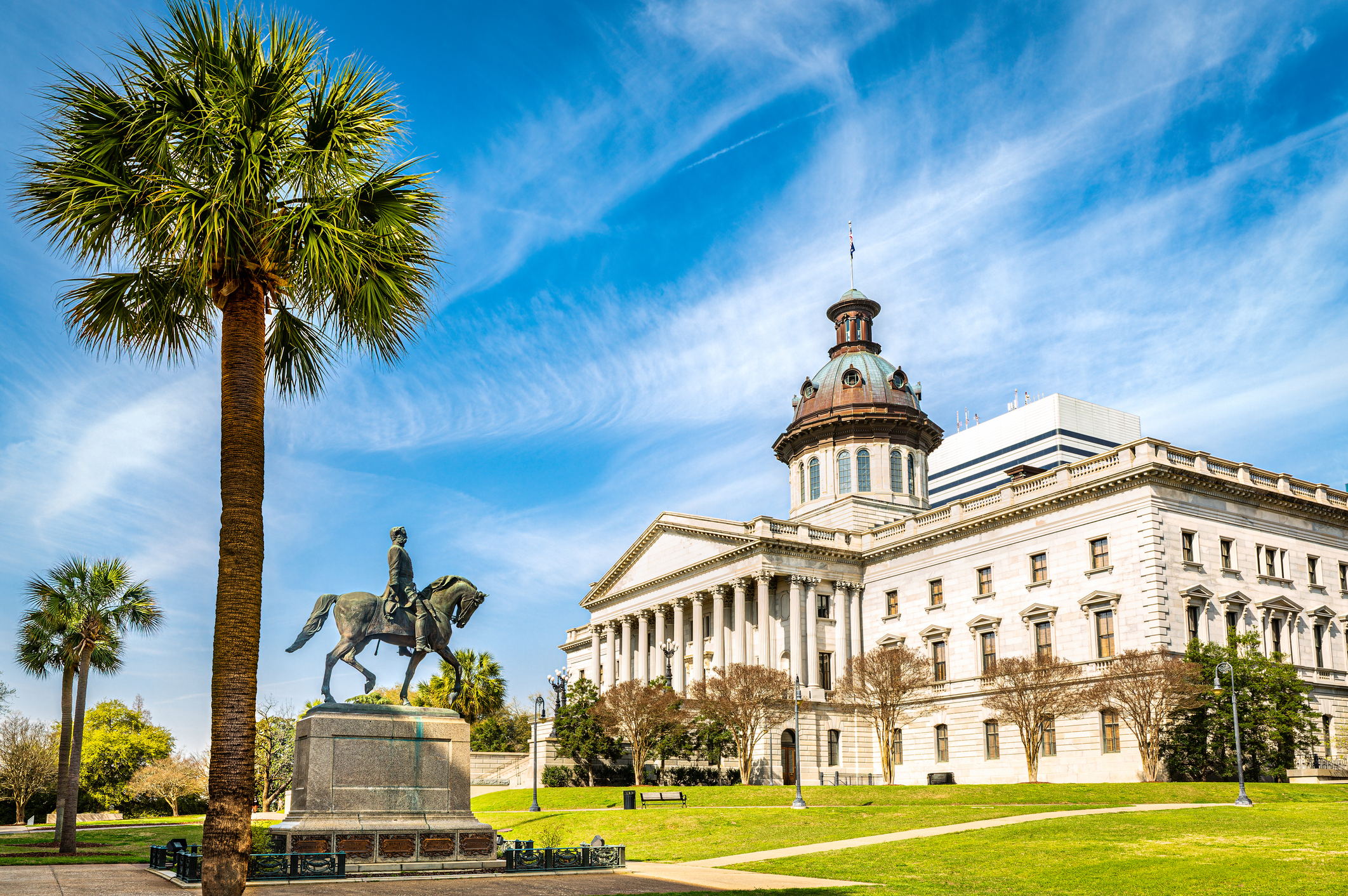
19. Columbia, South Carolina
- Cost of living: 13% below U.S. average
- City population: 142,083
- Median household income: $52,943
- Median home value: $269,100
- Unemployment rate: 4.6%
Columbia, South Carolina has the distinction of being the first first city in the US named for Christopher Columbus. The name Columbia won over the other popular option, Washington.
As the state capital, Columbia is the site of the South Carolina State House and is also home to the University of South Carolina. As Columbia is the capital of the state, the city's largest employer is the state of South Carolina, with 32,085 employees.
Textiles were a major industry at the beginning of the 20th century. Healthcare, education and manufacturing are the leading industries today. The manufacturing sector has emerged as a big player in the EV industry. Scout Motors employs 4,000 people and will be rebranded by Volkswagen as it enters the electric off-road vehicle market and builds those cars at a new local facility. Cirba Solutions, an electric vehicle battery materials facility, is investing $323 million to establish a new state-of-the-art, world-class lithium-ion battery recycling and materials facility.
The first textile mill run completely by electricity in the world opened in Columbia in 1894. The imposing brick building that housed the mill was repurposed and is now home to the South Carolina State Museum. The museum has a planetarium, an observatory, a collection of telescopes and over 4,500 pieces of art ranging from traditional portraiture to contemporary works.
The tallest trees east of the Mississippi are just 20 miles outside of Columbia in Congaree National Park. Congaree has more than two dozen "champion trees," or trees that are the largest of their species. It is also home to a unique species of fireflies.
The synchronous species of fireflies exist only in a handful of places throughout the world. Synchronous fireflies flash at once in a “symphony of light.” You can experience the magic for two weeks in late May and early June. The fireflies in Congaree will blink in unison on evenings with the right weather conditions.
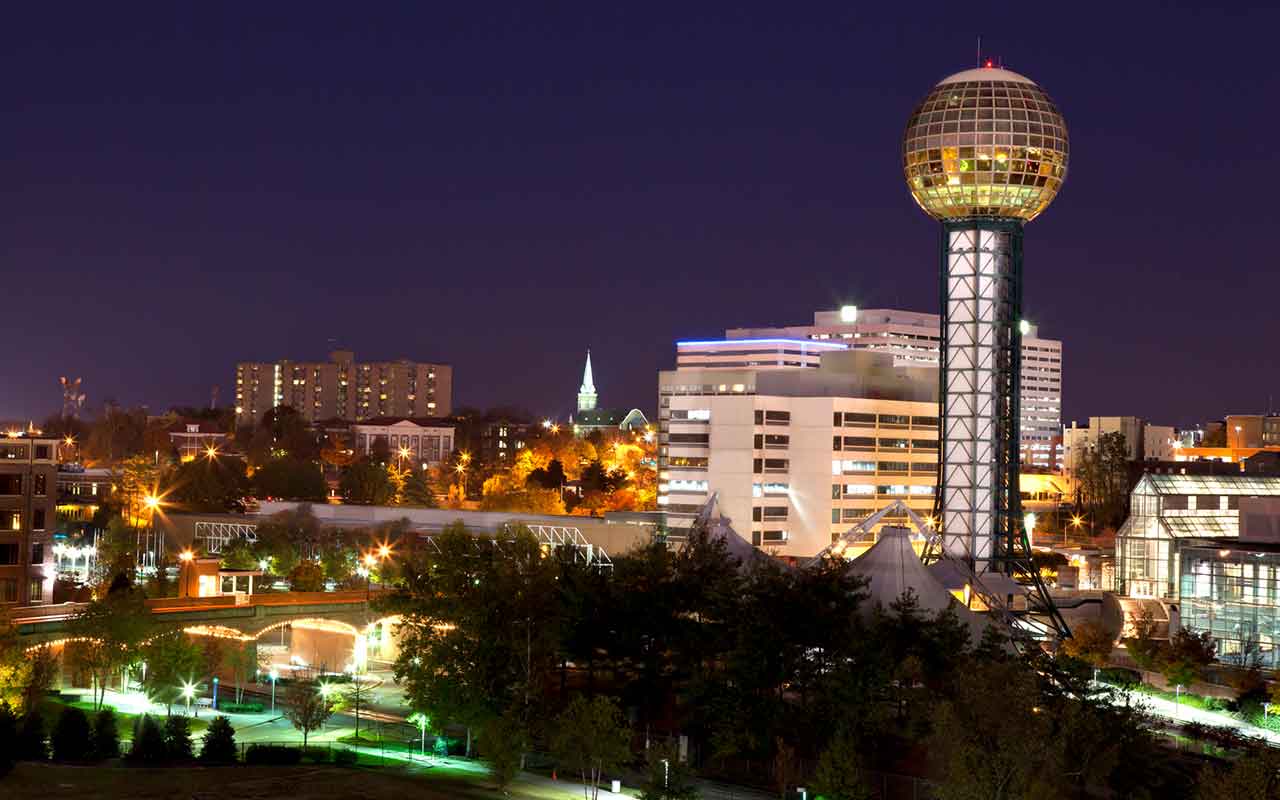
18. Knoxville, Tennessee
- Cost of living: 14.1% below U.S. average
- Metro population: 198,175
- Median household income: $50,183
- Median home value: $282,300
- Unemployment rate: 3.2%
Thrifty types should volunteer to check out Knoxville and its greater metro area, the only city in Tennessee to make the list for inexpensive living. The city is notable for its across-the-board affordability for everything from food to transportation, according to the Cost of Living Index.
The biggest savings, as per usual, come from the city's especially low housing costs, which run more than a quarter below the U.S. average. Indeed, the mean price of a Knoxville home is $126,871 lower than the national average. Apartment rents are about 27% less expensive.
Tennessee comes in as the second most tax-friendly state to live out your retirement. It also has no estate and inheritance taxes. The Volunteer State also earned a spot on Kiplinger's list of States With the Lowest Property Taxes.
Consider Knoxville, the original state capital before Nashville, a good mix of city and country living. It is home to the University of Tennessee and the Women's Basketball Hall of Fame, but Knoxville is also the gateway to the Great Smoky Mountains. The Tennessee River runs through downtown.
Major employers include the U.S. Department of Energy, Alcoa (AA) and Covenant Health.
The city was a strategic objective in the Civil War, so history buffs can visit a number of battlefields nearby, too.
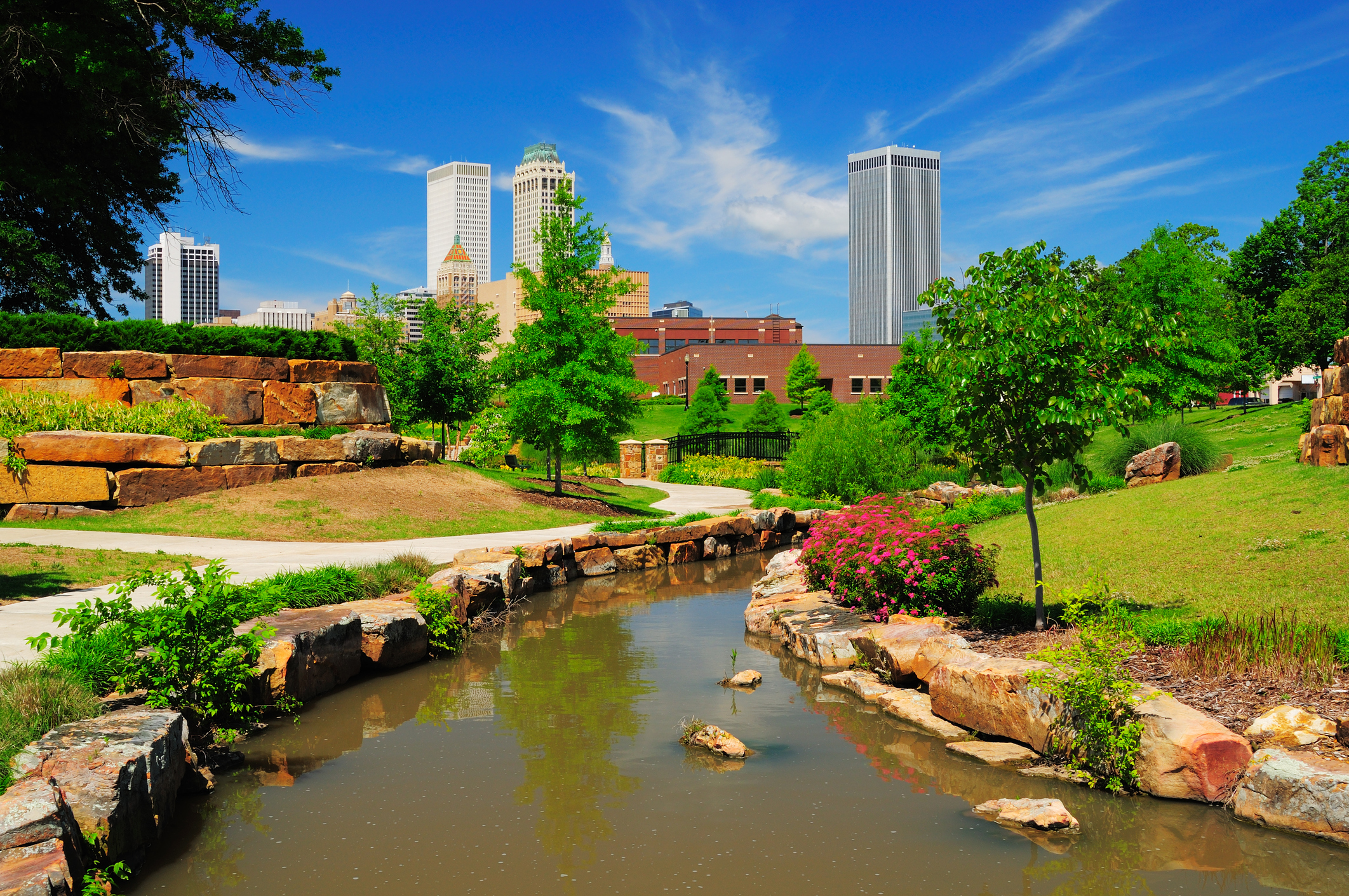
17. Tulsa, Oklahoma
- Cost of living: 14.6% below U.S. average
- Metro population: 412,322
- Median household income: $58,407
- Median home value: $189,600
- Unemployment rate: 3%
Tulsa is situated on the Arkansas River between the Osage Hills and the foothills of the Ozark Mountains in northeast Oklahoma. It’s the second-most-populous city in the state and is considered to be the cultural and arts center of Oklahoma. A robust energy sector, once known as the "Oil Capital of the World," fueled Tulsa's economy. However, today the city has diversified to include finance, aviation, telecommunications and technology.
In the early 20th century, Tulsa was home to "Black Wall Street," one of the most prosperous black communities in the United States at the time. In 1921, it was the site of the Tulsa Race Massacre that lasted for 16 hours and only ended when the National Guard was dispatched by the governor.
In 1925, Tulsa businessman Cyrus Avery, known as the "Father of Route 66," established the U.S. Highway 66 Association in Tulsa, earning the city the nickname the "Birthplace of Route 66."
Tulsa's aerospace industry is the city’s largest employer, and growing. An American Airlines maintenance base at Tulsa International Airport is the largest maintenance facility in the world. Tulsa is also home to a division of Lufthansa, the headquarters of Omni Air International, and the Spartan College of Aeronautics and Technology. Amazon recently announced plans to build a more than 600,000-square-foot fulfillment center near Tulsa International Airport.
Getting to work is cheaper in Tulsa. Transportation costs are over 14% less than the national average. Housing is another bargain, with residents paying only 67% of what the rest of the country pays. Average monthly rent and mortgage payments highlight the stark contrast. Rents on average are $913 and mortgage payments are $1,789. That is a savings of $665 (42%) and $786 (30%), respectively.
Since 1969, public displays of artwork in Tulsa have been funded by 1% of its annual city budget. Each year, a sculpture from a local artist is installed along the Arkansas River trail system, while other sculptures stand at a local park. The Philbrook Museum of Art is considered one of the top 50 fine art museums in the United States. The collection includes works from Pablo Picasso, Andrew Wyeth, Willem de Kooning, Auguste Rodin and Georgia O'Keeffe.
Taxes in Oklahoma are less than in the neighboring state of Texas. There are no estate or inheritance taxes, and the median property tax bill of $1,455 is far below the national average.
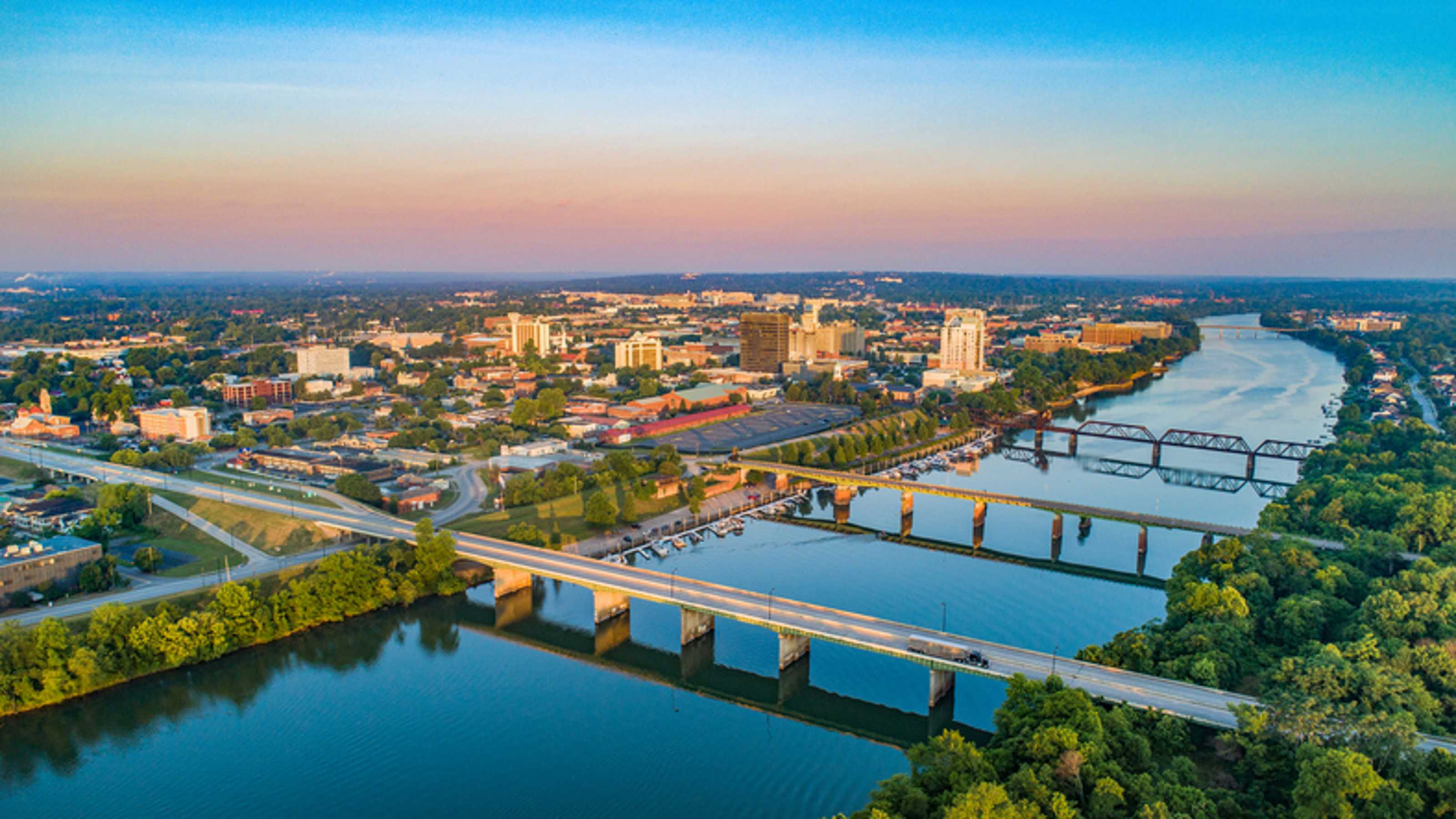
16. Augusta-Aiken, Georgia/South Carolina
- Cost of living: 14.7% below U.S. average
- Metro population: 628,186
- Median household income: $67,152
- Median home value: $238,300
- Unemployment rate: 4.7%
While most sports enthusiasts associate Augusta with the storied Masters Tournament, there's much more to this city than golf. The metro area, which includes Aiken, South Carolina, is a major center for cybersecurity companies thanks to the presence of the U.S. Army Cyber Command at nearby Fort Gordon.
Augusta is also a regional hub for medicine and biotechnology, supported by Augusta University, the state's only public health sciences graduate university — and the allied Medical District of Augusta.
Happily for locals, the area remains among the country's cheapest cities to live in despite the presence of so many well-paid occupations. Augusta-Aiken's cost of living runs 14.7% below the U.S. average, helped by housing costs that are almost 37% less than what the typical American pays. Folks pay about 20% less than the national average for healthcare, and get about a 7% break off transportation. Utilities are almost 6% higher than average.
And older citizens catch yet another break: Georgia happens to be one of the more tax-friendly states for retirees.
As much as the Masters dominates outsiders' imagination about this city, which sits a two-and-a-half-hour drive from downtown Atlanta, it has much more going on than golf. Phinizy Swamp Nature Park, minutes from downtown Augusta, offers 14 miles of hiking trails. Aiken is home to the University of South Carolina and the Aiken Thoroughbred Racing Hall of Fame and Museum.
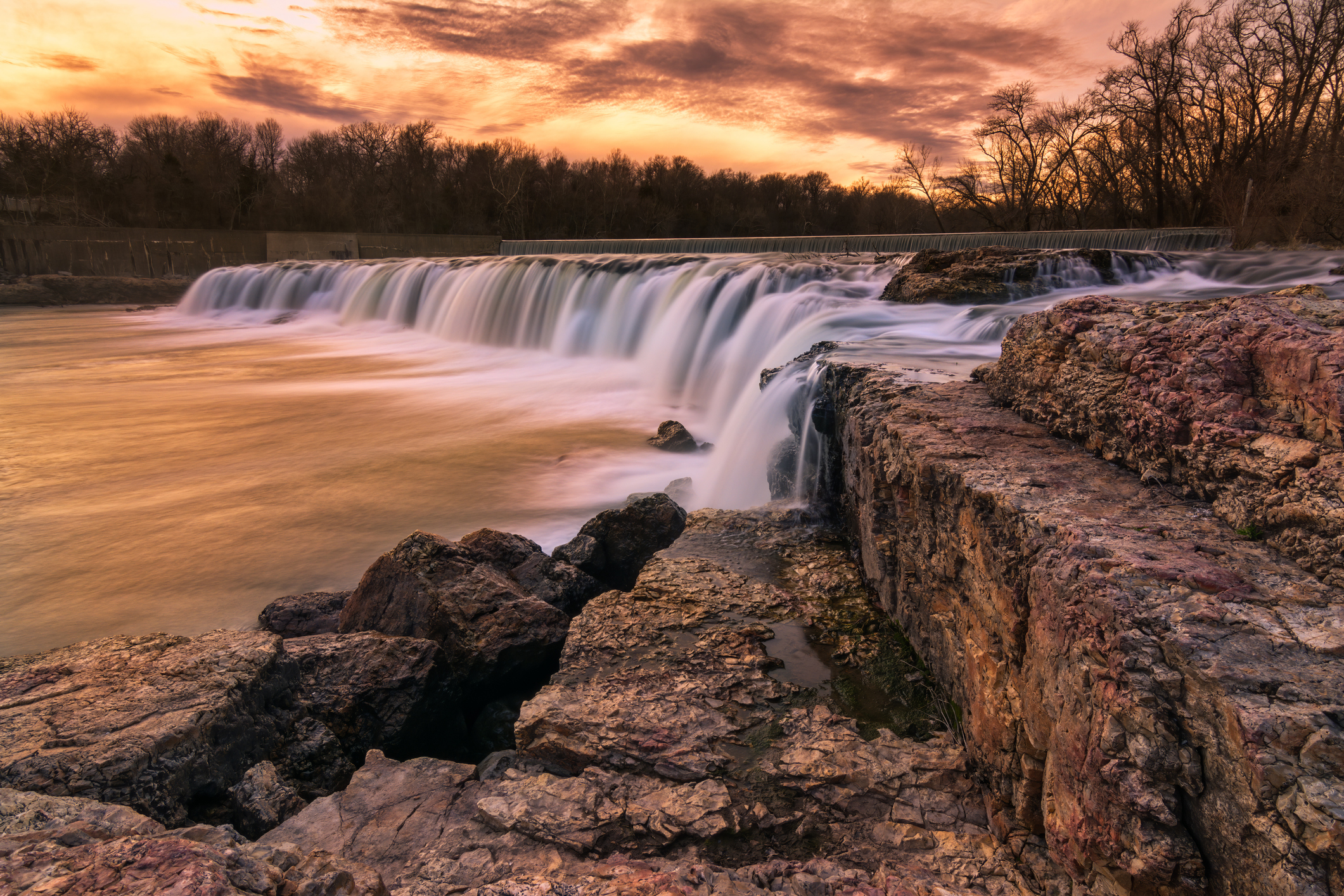
15. Joplin, Missouri
- Cost of living: 14.8% below U.S. average
- Metro population: 52,218
- Median household income: $51,154
- Median home value: $159,700
- Unemployment rate: 3.3%
It used to be that Joplin, at least to outsiders, was probably best known as a place where Depression-era bank robbers Bonnie and Clyde hid out for a time. Today, sadly, Joplin is perhaps better known for tornadoes, such as the deadly storm that destroyed about 30% of the city in 2011.
The city (and greater metro area) has since recovered from the costliest single tornado in modern U.S. history, helped by its status as a regional medical center. Its two major hospitals serve a four-state area that includes Kansas, Oklahoma and Arkansas.
Meanwhile, other key employers include General Mills (GIS), Schaeffler Group (SFFLY) and Leggett & Platt (LEG).
Housing-related costs, which run about 32% below the national average, help secure Joplin's place on the cheapest places to live for U.S. city dwellers. Expenses for groceries and healthcare are only 5.5% below average. Utilities are an outlier and run slightly over 8% above the national average.
From a tax perspective, Missouri is pretty average, but the state did lower its top income tax rate to 4.8% from 4.95% for 2023. The state repealed its income tax on Social Security retirement benefits, effective for the 2024 tax year.
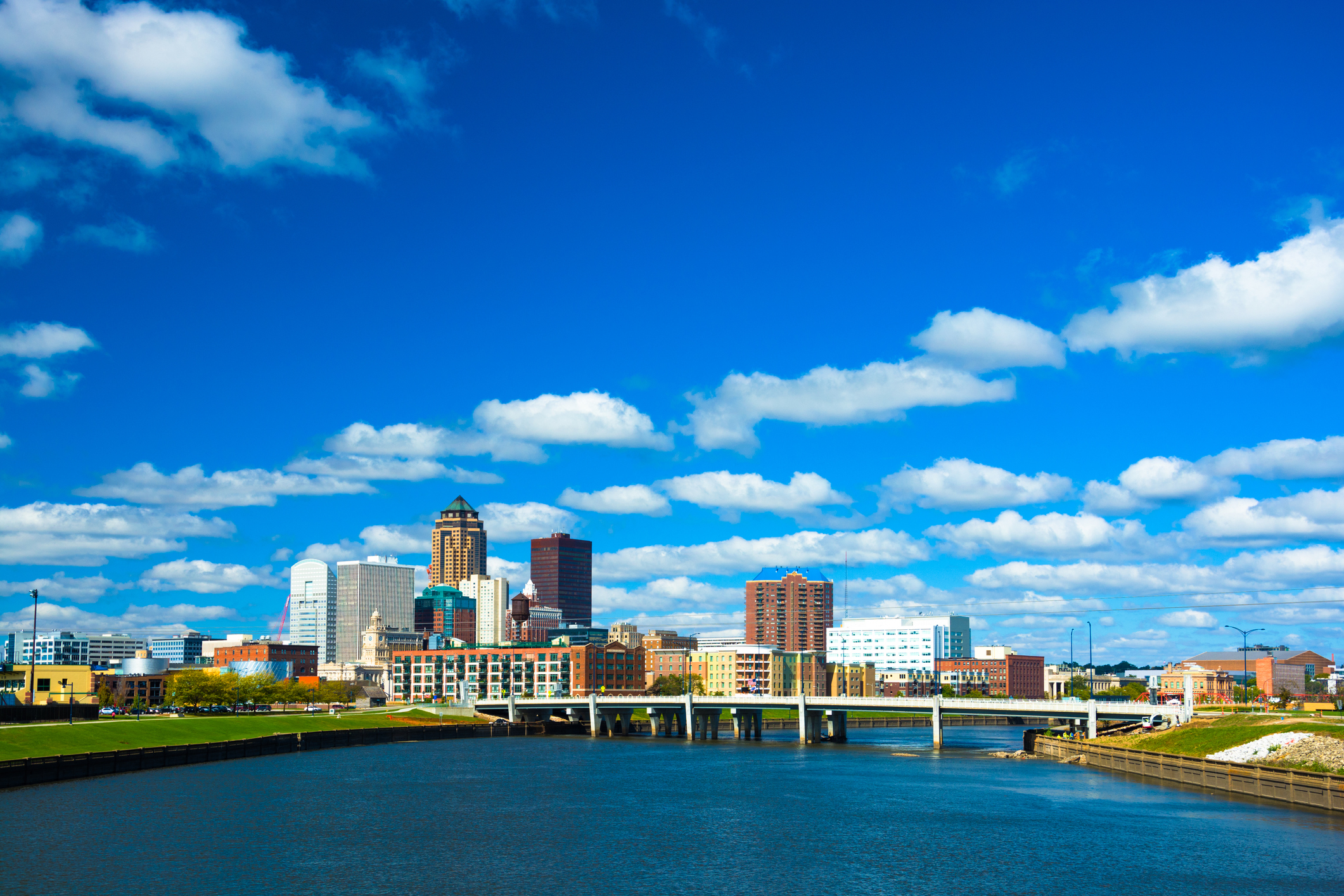
14. Des Moines, Iowa
- Cost of living: 14.8% below U.S. average
- Metro population: 212,464
- Median household income: $63,966
- Median home value: $183,700
- Unemployment rate: 3.2%
Des Moines kind of has it all: a robust and multifaceted economy; a vibrant cultural scene; major universities; and — most importantly for our purposes here — a low cost of living.
On the economic front, Des Moines is probably best known as a major center of the insurance industry and other financial services. Healthcare, manufacturing and logistics are also key planks supporting the local labor market.
Des Moines' strong economy helps keep both the unemployment and poverty rates well below state and national averages.
The city also benefits from a comparatively large student population, driven by Drake University, Grand View University, Mercy College of Health Sciences and numerous other institutions of higher learning.
At the other end of the age spectrum, Des Moines is known for being especially attractive to retirees. The city boasts plenty of healthcare facilities specializing in aging-related services. Health care costs are 18.7% less than the national average.
Retirees won't lack for things to do, either. There are numerous museums and arts venues, including an outdoor sculpture park, a zoo and botanical gardens. There's even a casino and racetrack in nearby Altoona that hosts annual camel, ostrich and zebra races (sorry, no wagering on these exhibition races allowed).
Best of all, Des Moines delivers all this with a cost of living that's 14.8% lower than the U.S. average. Housing expenses are roughly a third less than what the typical American spends to keep a roof over his or her head, while transportation and utilities costs are significantly lower too.
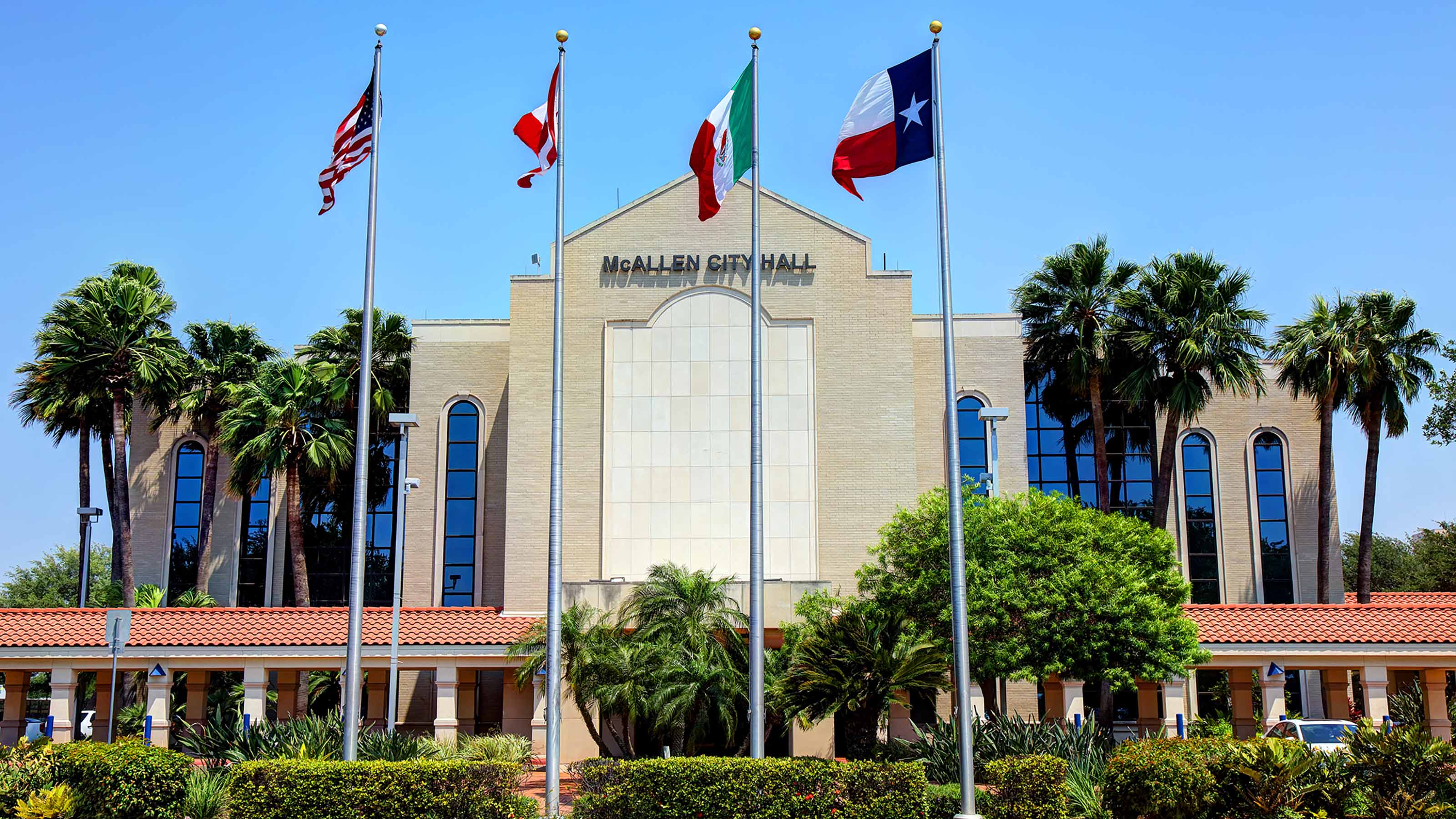
13. McAllen, Texas
- Cost of living: 14.9% below U.S. average
- Metro population: 146,599
- Median household income: $60,200
- Median home value: $203,900
- Unemployment rate: 6.1%
McAllen might be one of the cheapest places to live in the U.S., but it comes at a price. The poverty rate in the McAllen-Edinburg-Mission metro area is 27.2%. That's about double the Texas rate of 13.7% and more than twice the U.S. rate of 11.5%.
On the plus side, McAllen is famous for bird watching because of its location on a major migration route. The Quinta Mazatlan, a luxury birdhouse with more than 15 acres of birding habitat, is not to be missed. The city also features the International Museum of Art & Science, which has a specific focus on Latin American art.
And McAllen is indeed one of the cheapest places to live in the U.S. for city dwellers. Housing costs are 39.5% lower than the national average, healthcare expenses are 19% cheaper and grocery items are around 6.6% less than what the typical American pays. One of the few things residents pay a little extra for is utilities (+26.8%), which isn't surprising given that temperatures routinely soar into the high 90s during the summer months.
But surprisingly, Texas isn't a great place when it comes to taxes. How does a state with no income tax at all not end up on the "most tax-friendly" list? It starts by having the seventh-highest median property tax rate in the country. However, voters recently approved a new Texas property tax relief measure that expanded the homestead exemption.
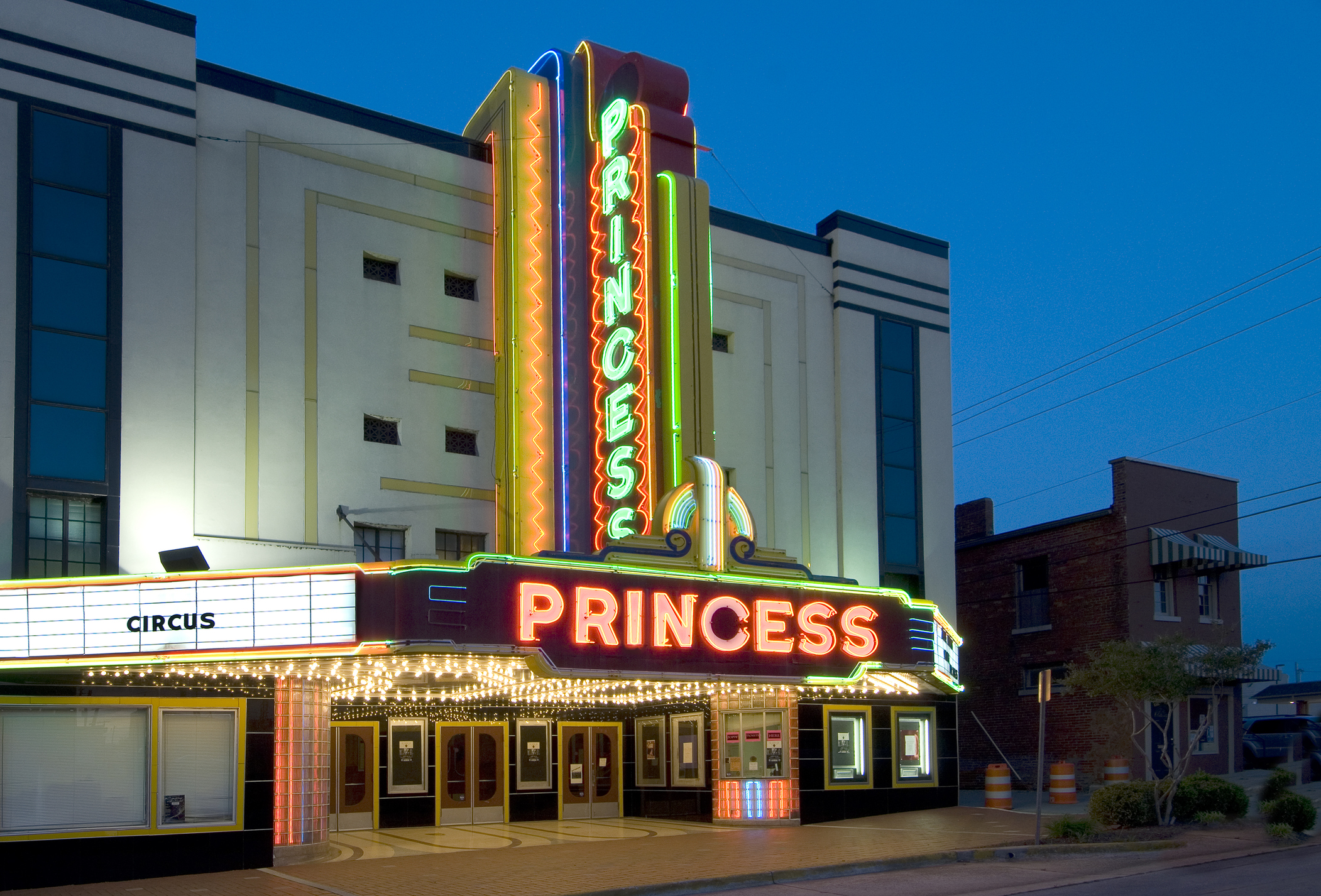
12. Decatur/Hartselle, Alabama
- Cost of living: 15% below U.S. average
- Metro population: 158,635
- Median household income: $72,965
- Median home value: $231,500
- Unemployment rate: 2.8%
Decatur and Hartselle are two northern Alabama cities with an abundance of outdoor activities, cultural diversions and low costs of living. Decatur's economy benefits from being one of the busiest ports on the Tennessee River, and from NASA's Marshall Space Flight Center in nearby Huntsville. Tourism is another driver of the local economy, thanks to the Wheeler National Wildlife Refuge, the Carnegie Visual Arts Center and festivals such as the Alabama Jubilee Hot Air Balloon Classic.
Nearby Hartselle, about 10 miles south, shares the charms of its neighbor to the north. Residents can cool off in the summer at the city's sprawling aquatic center, which includes a water slide and diving platform. And Southern history buffs will want to stroll through the Hartselle Downtown Commercial Historic District, which is listed in the National Register of Historic Places.
Residents can enjoy all this and more without breaking the bank. Decatur's housing-related costs, including mortgages and rents, are about 30% cheaper than the national average. Prices on a wide range of goods and services, from pizza to haircuts to dry cleaning, are less expensive, too

11. Anniston, Alabama
- Cost of living: 15.1% below U.S. average
- Metro population: 65,744
- Median household income: $53,872
- Median home value: $136,900
- Unemployment rate: 3.8%
About an hour's drive east from Birmingham sits the Anniston metro area. The city's proximity to the Mountain Longleaf National Wildlife Refuge makes it a good jumping-off point for hikers, mountain bikers and other outdoorsy types. The city also has its quirks. It's home to the world's largest office chair — a 33-foot-tall seat that was once recognized by Guinness World Records.
Major employers include the Anniston Army Depot and Alabama Regional Medical Center.
Anniston's low cost of living puts it among the 25 cheapest places to live, but it comes alongside a median income that's almost one-third lower than the national median. That said, household incomes and home values are higher in other parts of Calhoun County, of which Anniston is the county seat.
Either way, overall housing costs in the Anniston area are 37.9% lower than what the average American pays. Utilities, however, are relatively pricey, running 9.2% above the national average.
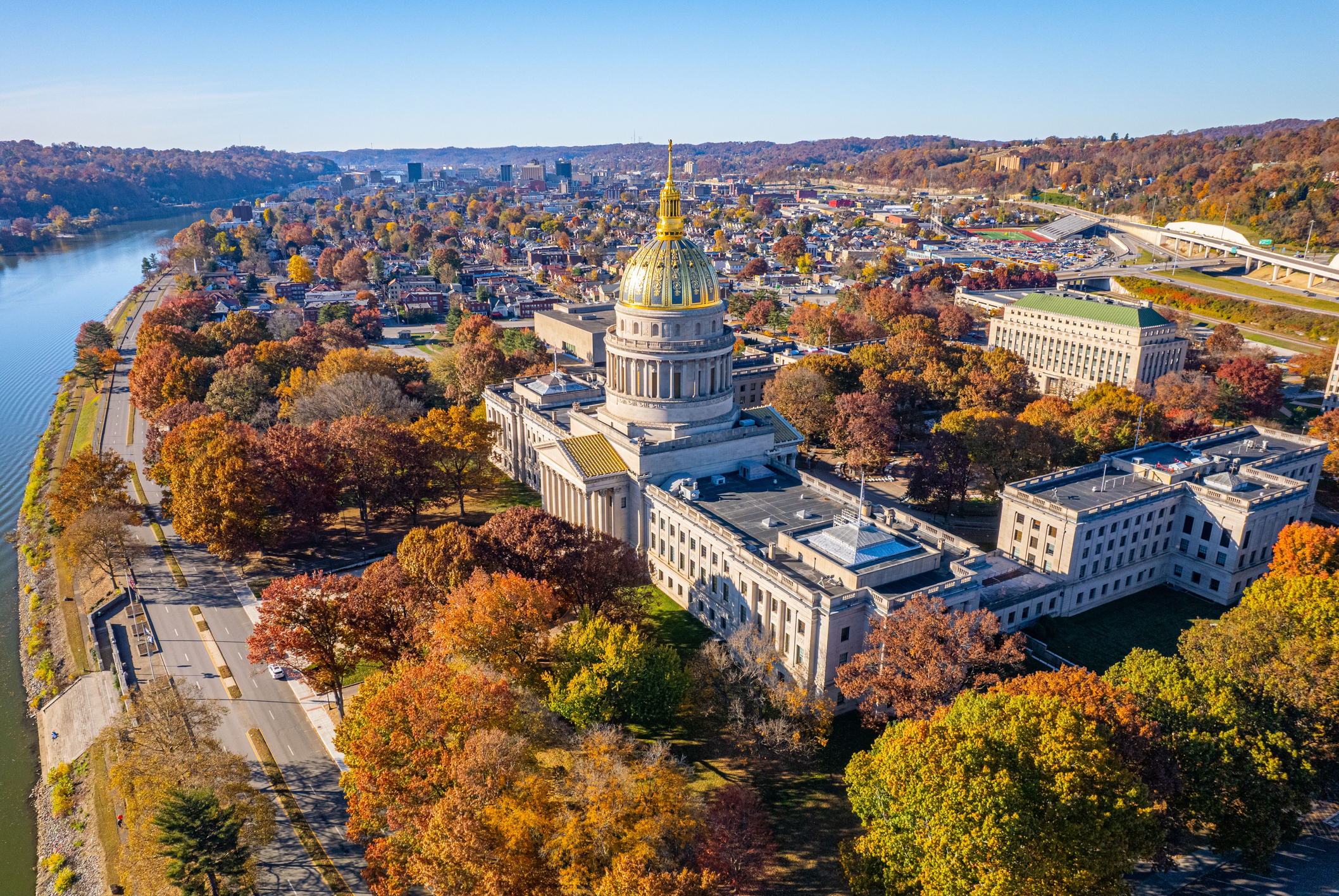
10. Charleston, West Virginia
- Cost of living: 15.2% below U.S. average
- Metro population: 47,918
- Median household income: $64,512
- Median home value: $187,300
- Unemployment rate: 3.5%
Charleston is located at the junction of the Elk and Kanawha rivers and is West Virginia’s capital city. The West Virginia Capitol Complex is a trip back in time. Clustered here are several landmarks to be toured, including the Capitol building, whose gold-leaf dome is taller than that of the U.S. Capitol. This city’s small scale and well-defined districts and neighborhoods make it easy to walk or bike around.
Charleston may start seeing an influx of new college grads. It ranks 20th on WalletHub's Best & Worst Places to Start a Career.
Charleston makes it easy to get out into nature. Head to Kanawha State Forest or Coonskin Park for hiking and biking (the forest even has a pool). In the middle of the river and connected to land, you’ll find Magic Island, a park that offers beach volleyball and other fun. And within an hour’s drive, you have access to mountain biking, skiing and canoeing.
There is no shortage of fine arts in Charleston. You can be a culture vulture at a discount. This city is home to the West Virginia Symphony Orchestra, Charleston Light Opera Guild and the The Charleston Ballet, which offers classes in addition to performances. Tickets to the ballet range from $14 to $54.00 and that is considerably cheaper than the price of admission to see the New York City Ballet at the Kennedy Center where tickets cost between $39.00 – $139.00.
Getting ready for a night out in Charleston is also cheaper than most places. A trip to the beauty salon will typically cost you $40 and that is 18% less than the national average. Going to the barber will cost a bit more and is 14% above the average price of $26.21.
West Virginia took second place on Kiplinger’s 13 States With the Lowest Property Taxes. Median real estate taxes paid were just over $989 and homeowners age 65 and older may qualify for a homestead exemption of up to $20,000.

9. Conway, Arkansas
- Cost of living: 15.7% below U.S. average
- Metro population: 69,577
- Median household income: $62,886
- Median home value: $246,100
- Unemployment rate: 2.9 %
The city of Conway — an affordable enclave in the Little Rock-North Little Rock-Conway metro area — is home to a number of high-tech companies, including information technology firm Insight Enterprises (NSIT).
Being home to a large proportion of younger residents helps keep costs in check. Known as "The City of Colleges," Conway hosts three post-secondary educational institutions: the University of Central Arkansas, Hendrix College and Central Baptist College.
Close proximity to the Arkansas River and Lake Conway makes the city ideal for fishing and water sports, and there's ample space for hunting. Yet you can drive to the state capital of Little Rock in a half-hour or so.
Not that Conway is without its own more aspirational cultural attractions. The city is home to the Arkansas Shakespeare Theatre, the state's only professional Shakespeare company.
Conway's housing costs are affordable, and run 25% below the national average. Utilities, transportation and healthcare costs are also comparatively modest.
As Kiplinger's Arkansas State Tax Guide shows, the state doesn’t create a tax-burden for retirees. And there are no estate or inheritance taxes when you die.
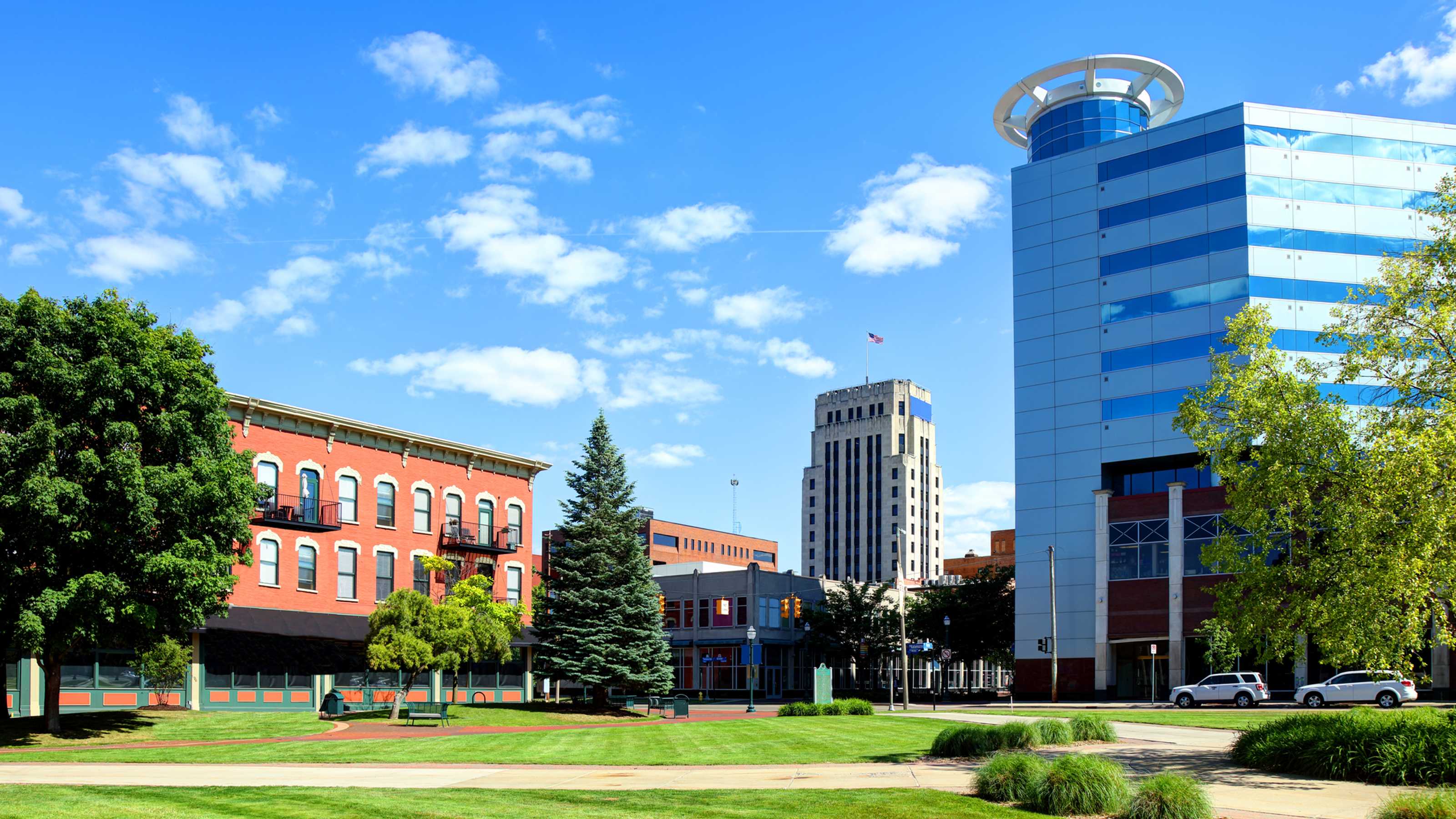
8. Kalamazoo, Michigan
- Cost of living: 15.8% below U.S. average
- Metro population: 73,122
- Median household income: $50,044
- Median home value: $172,400
- Unemployment rate: 4.3%
Kalamazoo annually ranks among the cheapest places to live in the U.S. Sadly, low costs are very much a necessity for too many of its residents.
In the city of Kalamazoo proper (pop. 73,122), nearly 23.6% of residents live below the poverty line. At the metro level, which includes Portage, Michigan, the figure comes to 7.5%. The U.S. and Michigan state poverty rates are 11.1% and 13.1%, respectively.
Another downside? Michigan is among the least tax-friendly states for middle-class families. The median property tax rate is relatively high, and fuel taxes are high compared to other states.
On the brighter side, Western Michigan University, with its multiple campuses and research facilities, is a major driver of the local economy. Medical equipment maker Stryker (SYK) is headquartered in the city, and Pfizer (PFE), the drug company, maintains its largest manufacturing site in Kalamazoo. In late 2022, the pharma giant committed to investing $750 million into its Kalamazoo facility.
As for recreational activities, the Kalamazoo Nature Center hosts free daily activities. Nearby parks offer a combined 140 miles of trails and three swimming beaches. If you want to get away to the big city, Chicago is less than three hours by car if traffic is merciful.
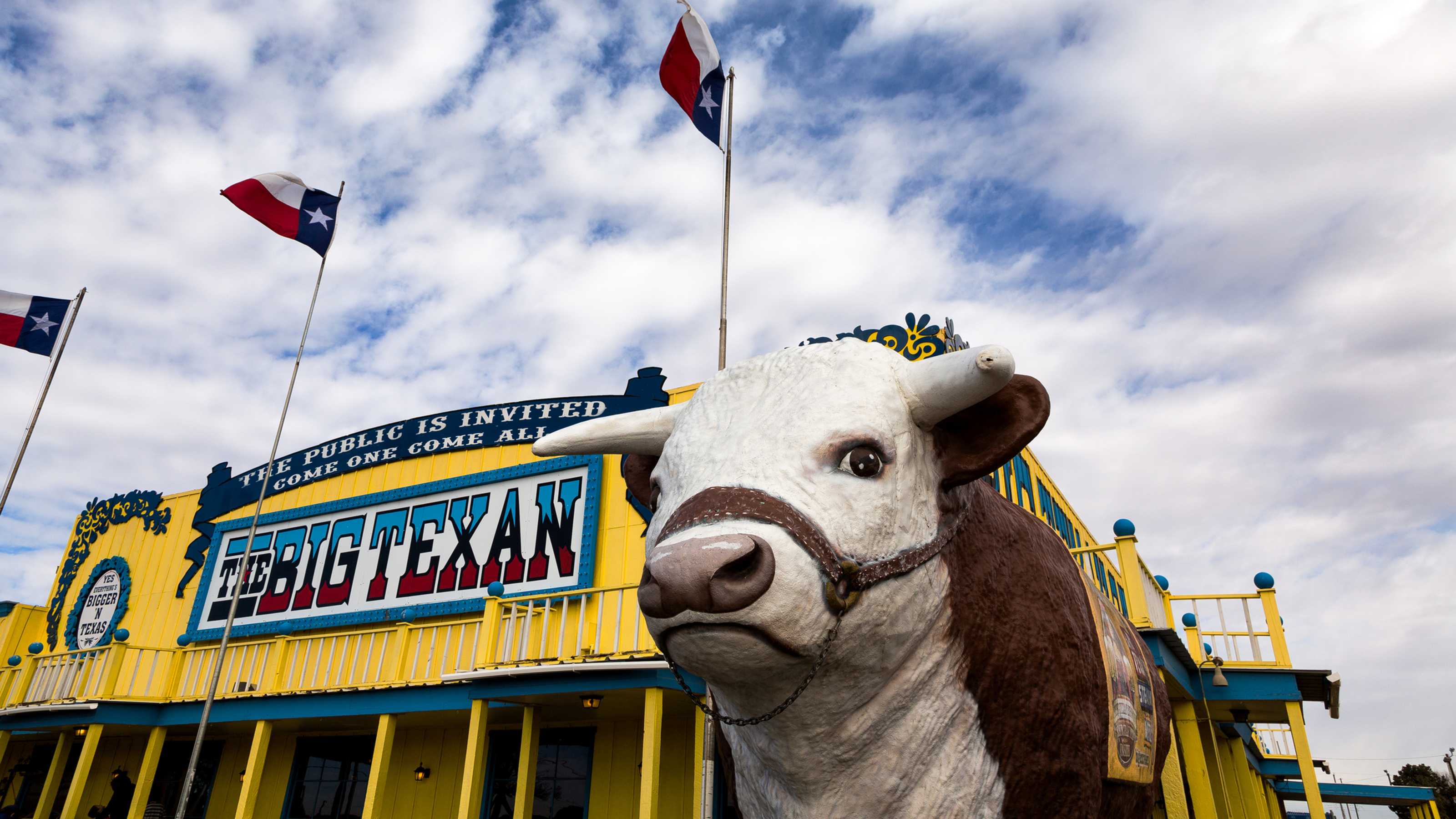
7. Amarillo, Texas
- Cost of living: 16% below U.S. average
- Metro population: 203,042
- Median household income: $58,897
- Median home value: $190,700
- Unemployment rate: 3.1%
Amarilloans are known for their love of high school football, hot sauce and thick steaks. They also enjoy savings on a wide range of goods and services. Need to get your eyes checked? An appointment with an optometrist is 36% less expensive in the city known as "The Yellow Rose of Texas." Dry cleaning bills are 40% cheaper than the national average. And you'll save about 19% getting your washer repaired after it inevitably breaks down.
But the biggest way folks in this part of the Texas Panhandle save money is by what they shell out for housing.
Metro-area residents spend 38% less on housing-related costs vs the national average. The average house price of $266,625 is $254,146 below the national average. Apartment rents are 22% cheaper than what the typical American pays every month.
It's also encouraging that Amarillo's economy has remained invigorated. For example, the metro area's unemployment rate of 3.1% stands below the national rate of 4.1%. Major employers include Tyson Foods (TSN), CNS Pantex and BSA Health System.
However, despite having no state income tax, Texas's tax picture for middle-class families is fairly mixed. In 2023, voters approved Proposition 4, which cut property taxes for Texas homeowners through tax compression and by increasing the state’s homestead exemption.
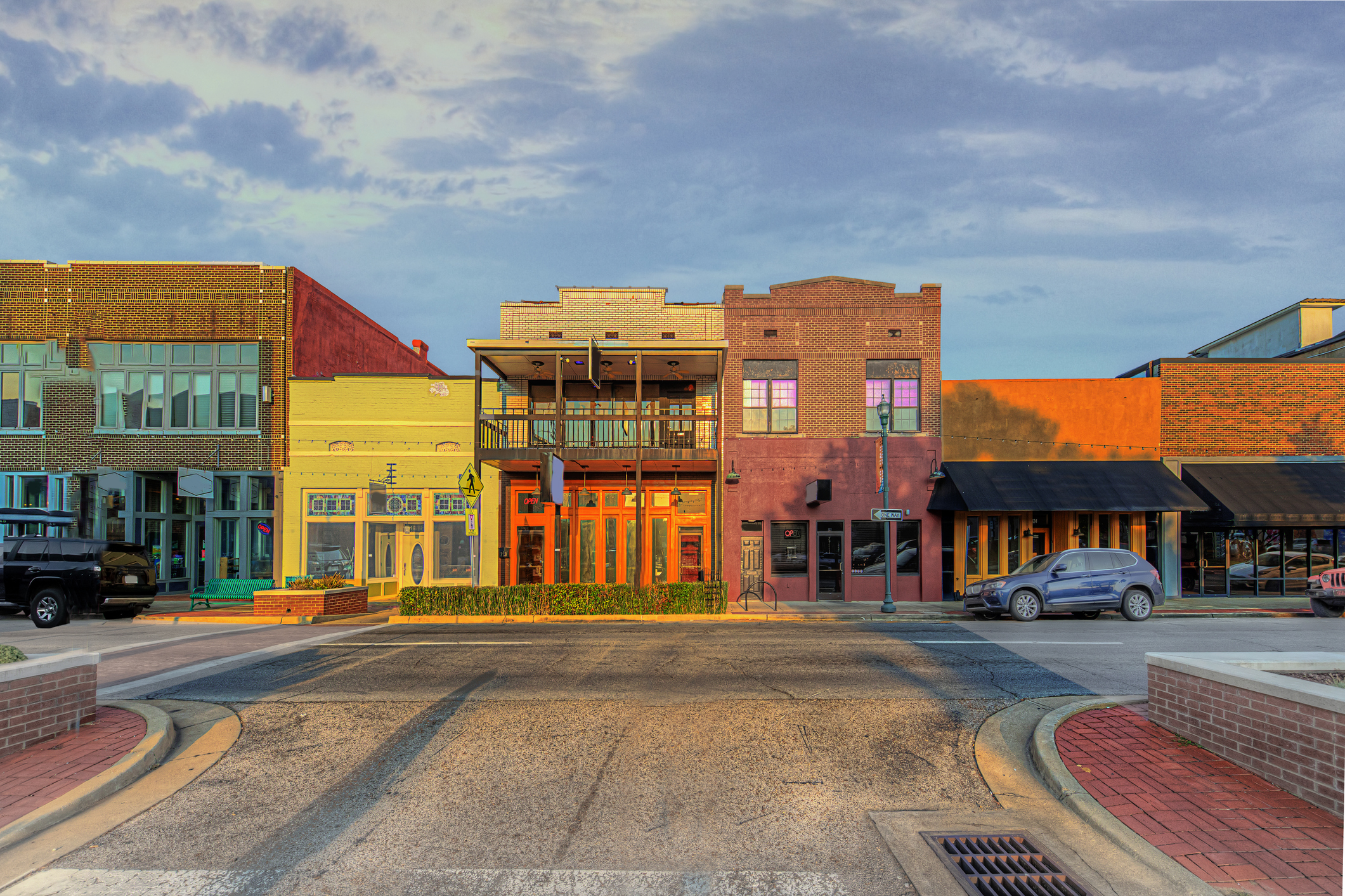
6. Jonesboro, Arkansas
- Cost of living: 16% below U.S. average
- Metro population: 80,655
- Median household income: $57,264
- Median home value: $201,000
- Unemployment rate: 2.8%
The Jonesboro Metro area consists of two counties, Craighead and Poinsett, and is anchored by the city of Jonesboro. It’s located in northeast Arkansas and a short 50 mile drive to Memphis, Tennessee. Jonesboro has a small town vibe with facets of a college town as it is home to Arkansas State University.
Arkansas State University is host to the ASU museum that strives to serve the community at large. On Saturdays, the museum’s Tinkering Studio teaches children how circuits work, how to use math to create art and how to create their own animations.
Birding is a popular pastime in Arkansas. Inside the 692 acre Craighead Forest Park is the Craighead Forest Trails Loop. This trail is about 7.4 miles long and is a popular destination for ornithologists and twitchers. Or enjoy year-round fishing for bream, catfish, crappie and bass at Lake Frierson State Park, a short 10 miles north of downtown Jonesboro.
There are plenty of local corporate employers in Jonesboro including Frito-Lay, Unilever, and General Mills — so you can get a good job and enjoy an affordable lifestyle all in one place.
Owning a home is more attainable here than in most places. Arkansas's property taxes are among the lowest in the nation. Housing costs are 35% cheaper than the national average and utilities are 8% less. The average commute is 18 minutes and gassing up your car to get to work costs only 88% of the national average.
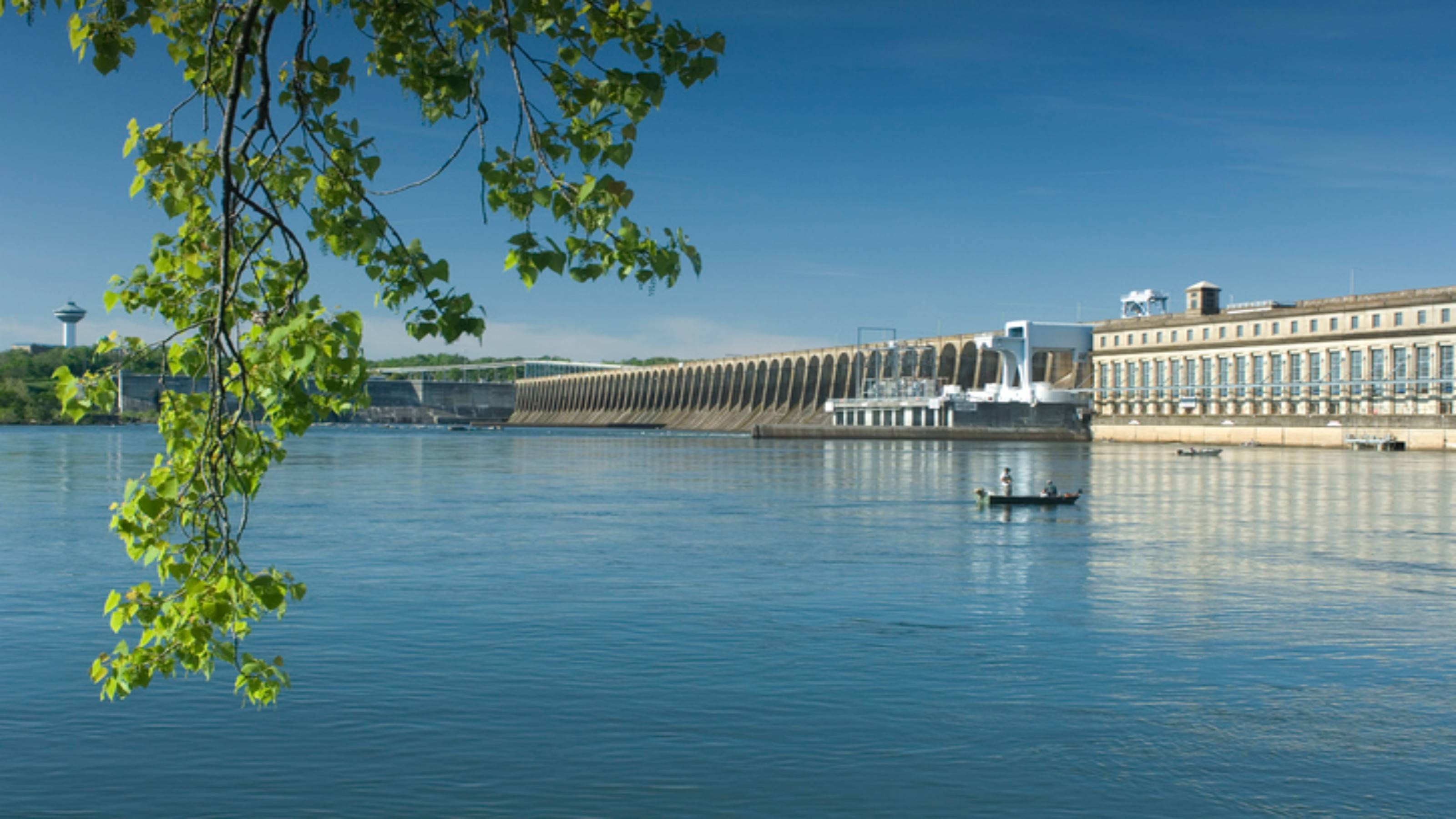
5. Florence, Alabama
- Cost of living: 16% below U.S. average
- Metro population:41,231
- Median household income: $50,396
- Median home value: $ 74,100
- Unemployment rate: 3.5%
Florence and the Florence-Muscle Shoals metro area, which encompasses the birthplace of Helen Keller, sits in the northwest corner of Alabama on the Tennessee River. It's about a two-hour drive from Birmingham.
In addition to a low cost of living, Florence — and the surrounding area known by locals as The Shoals — boasts a number of attractions and a rich history of music. Florence native W.C. Handy's legacy as the "Father of the Blues" is celebrated with an annual summer festival. And it's no coincidence The Rolling Stones recorded the hit songs "Wild Horses" and "Brown Sugar" at the nearby Muscle Shoals Sound Studio.
Florence claims Alabama's only house designed by legendary architect Frank Lloyd Wright. The city also hosts the University of North Alabama.
Best of all, the city's distinctive sites and southern charm come at a reasonable price. Housing-related expenses are 35% lower than what the average American pays. Healthcare, meanwhile, costs about 19% less. While the state has one of the lowest property tax rates in the nation, it also has one of the highest sales tax rates in the U.S.
All other major expenses tracked by the Cost of Living Index likewise take a smaller bite of folks' paychecks, securing Florence's place among the 25 cheapest places to live for U.S. city dwellers.

4. Kokomo, Indiana
- Cost of living: 16.2% below U.S. average
- Metro population: 59,375
- Median household income: $54,195
- Median home value: $126,500
- Unemployment rate: 9.3%
Kokomo was founded in 1844 as the county seat for what is now Howard County. It was originally home to the Miami Indians that lived along the waterways and the valley of the Wabash River in north central Indiana.
I’m guessing droughts in Kokomo are a rare occurrence. This patch of Indiana gets 42 inches of rain and 30 inches of snow per year, on average. The U.S. average is lower at 38 inches of rain and 28 inches of snow per year.
Although the median household income is about two-thirds of the amount in the U.S., the housing costs are almost 40% below the national average. Indiana currently has a flat tax rate of 3.15% that is applied to state adjusted gross income after modifications. Starting with the 2024 tax year, all military income will be exempt from state income tax.
Getting around the city of Kokomo is easy and can be free. The city offers residents and visitors free public transportation through City Line Trolley, providing coverage to most of the education, retail and medical areas and services with over 250 specific stops. The KokoGo Bike Share facility offers a free bike share program during the spring, summer and fall months. Overall utility costs are about 10% below the national average.
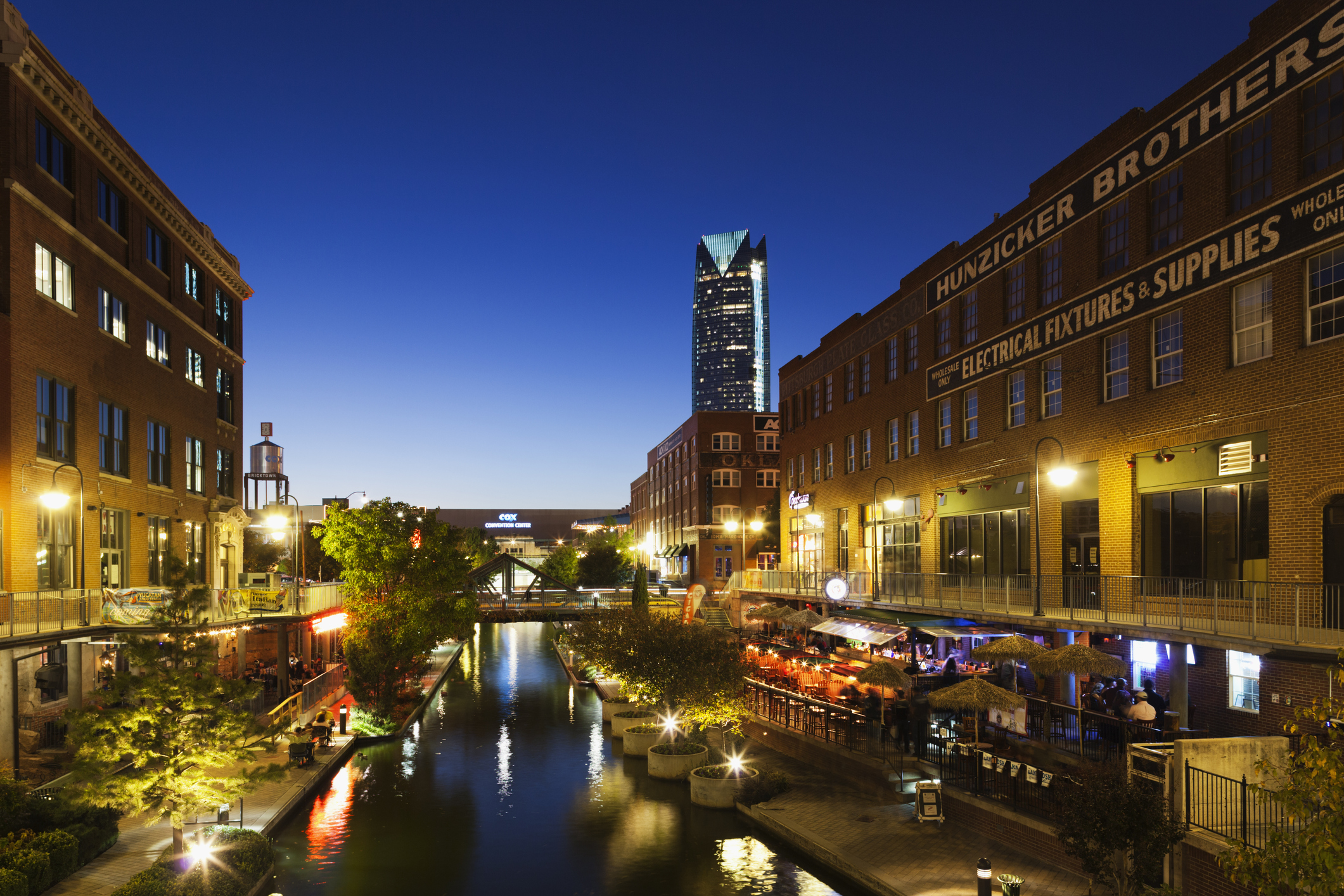
3. Oklahoma City, Oklahoma
- Cost of living: 17.6% below U.S. average
- Metro population: 702,654
- Median household income: $67,015
- Median home value: $248,100
- Unemployment rate: 2.8%
The largest city in Oklahoma offers remarkably affordable prices for its size. The biggest reason: Housing costs run 40% below the national average, according to the Cost of Living Index, which takes into account both home prices and apartment rents.
Drilling down into those categories, home prices in Oklahoma City average $317,474 vs. a national average of $520,771. Renters also do quite well on a relative basis. Average apartment rent comes to $819 a month compared with a U.S. average of $1,578.
Transportation and miscellaneous goods and services also cost appreciably less in Oklahoma City. However, healthcare is 10% more and utilities aren't much cheaper than what the typical American pays.
And, yet, as a metro area with over a half-million people, Oklahoma City offers a lot of big-city attractions, from a philharmonic orchestra to the National Softball Hall of Fame and Museum. At the professional sports level, the Oklahoma City Thunder represents the metro area in the NBA.
Meanwhile, a well-rounded metro-area economy helps folks find jobs in a wide range of industries. Major employers include the U.S.A.F.'s Tinker Air Force Base, the University of Oklahoma and Amazon.com (AMZN).
Be forewarned, however, that Oklahoma is not tax-friendly for middle-class families and presents a mixed tax picture for retirees. An upside is that there is no estate or inheritance tax in Oklahoma.
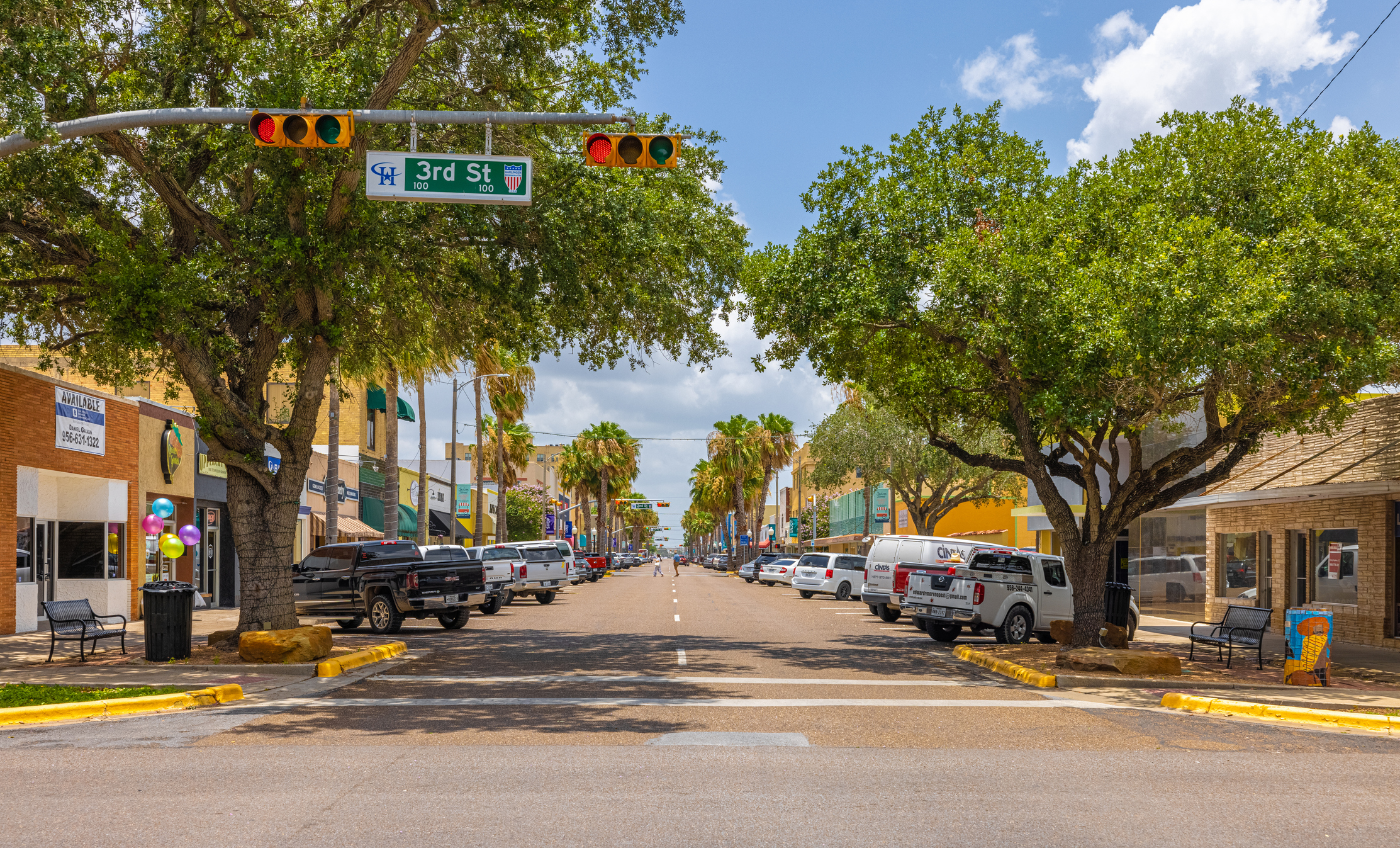
2. Harlingen, Texas
- Cost of living: 17.8% below U.S. average
- Metro population: 71,512
- Median household income: $60,065
- Median home value: $170,700
- Unemployment rate: 5.4%
Harlingen sits at the southernmost tip of Texas, with the Rio Grande to the south and the Gulf of Mexico to the east. The Brownsville-Harlingen metro area is a hardscrabble place where 20.1% of residents live below the poverty line. That's about one-and-a-half times the poverty rate for Texas as a whole. Comparatively low median household income and high unemployment are other grim aspects of the metro area's economy.
However, just about everything, from groceries to gasoline, costs less in Harlingen. Locals save about 6% on a good cut of steak compared to the national average. The average home price in Harlingen ($359,212) is a striking $161,559 less than the U.S. average. The average apartment rents for $885 per month — or 44% lower than the national average of $1,578.
Texas ranks 10th on Kiplinger's Best States for Middle-Class Families Who Hate Paying Taxes. Texas also recently reduced property taxes. One major highlight of the legislation is an increased homestead exemption from $40,000 to $100,000 ($110,000 for homeowners 65 and older and those with disabilities).
As with not-too-distant neighbor McAllen, utility bills run a bit high, or 32.6% above the national average.
Although agriculture remains central to Harlingen's local economy, the healthcare and telecommunications industries are rapidly gaining importance.
Lastly, it would be negligent to forget one of the area's biggest selling points: Harlingen is only about an hour's drive to the beaches of South Padre Island.

1. Decatur, Illinois
- Cost of living: 20.2% below U.S. average
- Metro population: 66,594
- Median household income: $46,564
- Median home value: $89,400
- Unemployment rate: 5.6%
Decatur currently ranks as the cheapest place to live in the U.S. among cities with metro areas with at least 50,000 inhabitants.
Decatur, Illinois, and its surrounding metro area is probably best known as an agricultural and manufacturing center. Archer Daniels Midland (ADM) moved its headquarters to Chicago in 2013 but maintains operations in this central Illinois city. Caterpillar (CAT), the world's largest maker of construction and mining equipment, has facilities in the area, as well. Decatur likewise lays claim to a massive corn-processing plant owned by U.K.-based food ingredients company Tate & Lyle (TATYY).
Archer Daniels Midland's departure following a price-fixing scandal was a blow to the local economy, and Decatur struggles with elevated unemployment to this day. A cost of living that's nearly a fifth lower than the national average is partly a symptom of ADM's exit, but at least it's also something of a salve.
Housing costs are slightly more than 50% lower than the national average in metro Decatur, and healthcare is much cheaper too. However, the cost of utilities is almost 1% above the national average and transportation costs are only 1% lower. Those savings help make up for the fact that Illinois is among the least tax-friendly states for middle-class families. Illinois has one of the highest sales tax rates in the U.S., but it's also one of the states that don't tax retirement income.
Decatur's status as one of the cheapest places to live in the U.S. is no doubt appreciated by its significant student population, which includes Millikin University's approximately 1,807 students and the roughly 2,075 people studying at Richland Community College.
Get Kiplinger Today newsletter — free
Profit and prosper with the best of Kiplinger's advice on investing, taxes, retirement, personal finance and much more. Delivered daily. Enter your email in the box and click Sign Me Up.

Donna joined Kiplinger as a personal finance writer in 2023. She spent more than a decade as the contributing editor of J.K.Lasser's Your Income Tax Guide and edited state specific legal treatises at ALM Media. She has shared her expertise as a guest on Bloomberg, CNN, Fox, NPR, CNBC and many other media outlets around the nation. She is a graduate of Brooklyn Law School and the University at Buffalo.
- Charlotte GorboldKiplinger Contributor
- Dan BurrowsSenior Investing Writer, Kiplinger.com
-
 How Baby Boomers and Gen Xers Are Redefining Retirement Living
How Baby Boomers and Gen Xers Are Redefining Retirement LivingBoth generations need to embrace change and leverage real estate as a dynamic asset in their retirement planning. Here's how financial advisers can help, too.
By David Conti, CPRC Published
-
 How Good Advisers Manage Risk in Challenging Markets
How Good Advisers Manage Risk in Challenging MarketsThey understand the difference between what might be real challenges to an investor's strategy and fear brought on by market volatility.
By Ryan L. Kirk, CFA® Published
-
 What to Do With Your Tax Refund: 6 Ways to Bring Growth
What to Do With Your Tax Refund: 6 Ways to Bring GrowthUse your 2024 tax refund to boost short-term or long-term financial goals by putting it in one of these six places.
By Rachael Green Published
-
 What Does Medicare Not Cover? Eight Things You Should Know
What Does Medicare Not Cover? Eight Things You Should KnowHealthy Living on a Budget Medicare Part A and Part B leave gaps in your healthcare coverage. But Medicare Advantage has problems, too.
By Donna LeValley Published
-
 12 Great Places to Retire in the Midwest
12 Great Places to Retire in the MidwestPlaces to live Here are our retirement picks in the 12 midwestern states.
By Stacy Rapacon Published
-
 10 Cheapest Small Towns to Live In
10 Cheapest Small Towns to Live InThe cheapest small towns might not be for everyone, but their charms can make them the best places to live for plenty of folks.
By Dan Burrows Published
-
 Best Cold Weather Places to Retire
Best Cold Weather Places to RetirePlaces to live Some like it hot; others not so much. Here are the 12 best places to retire if you can't stand the heat.
By Stacy Rapacon Published
-
 15 Reasons You'll Regret an RV in Retirement
15 Reasons You'll Regret an RV in RetirementMaking Your Money Last Here's why you might regret an RV in retirement. RV-savvy retirees talk about the downsides of spending retirement in a motorhome, travel trailer, fifth wheel or other recreational vehicle.
By Bob Niedt Published
-
 The Cheapest Places To Retire in the US
The Cheapest Places To Retire in the USWhen you're trying to balance a fixed income with an enjoyable retirement, cost of living is a crucial factor to consider.
By Stacy Rapacon Published
-
 Before Buying Your First Home, Get These Three Ducks in a Row
Before Buying Your First Home, Get These Three Ducks in a RowWith mortgage rates higher than we're used to, making sure you can comfortably afford to buy your first home is more important than ever.
By David W. Johnston, CFP® Published
